SUMMARY
This is AI generated summarization, which may have errors. For context, always refer to the full article.
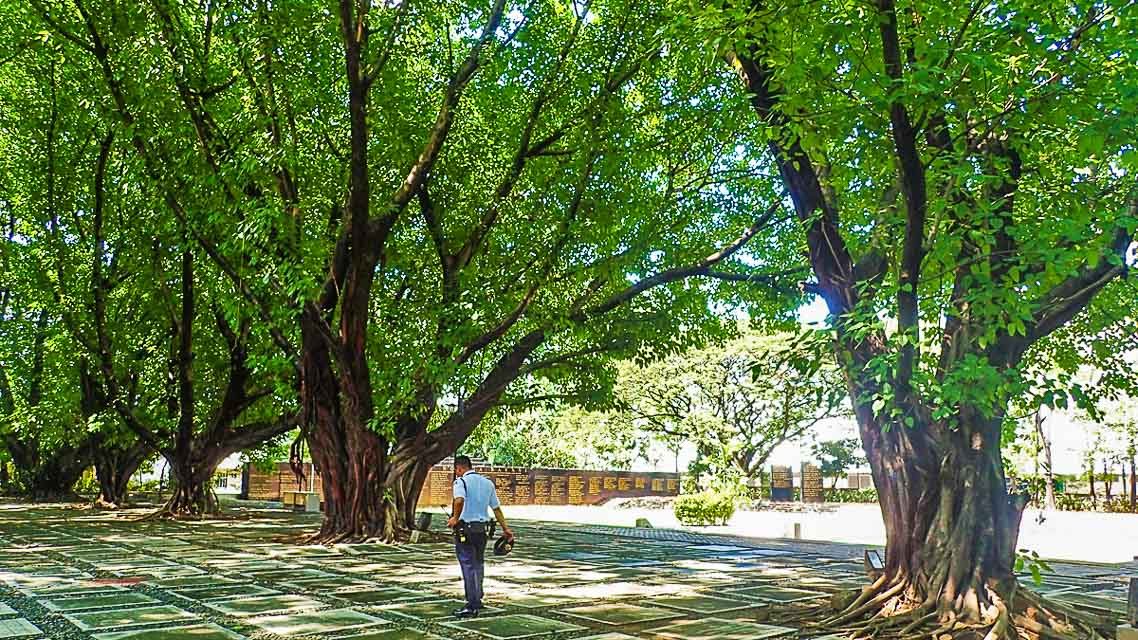
At first glance, the place appears to be a park, with rows of bodhi trees providing generous shade even under the hottest noonday sun. To the right of the trees is a wide carpet of grass that looks perfect for weekend picnics. It is a welcome green space at Quezon Avenue, especially near the corner of an often traffic-choked EDSA.
There are signs that this is no ordinary park, though: near the entrance stands a 14-meter-tall monument of a woman stretching her left hand up to the sky and her right hand holding a fallen man.
On a tarp amid the tree branches runs the words “Never Again, Never Forget.” And, at the end of the grassy expanse in the interior grounds is a long granite wall bearing hundreds of names.
The place is Bantayog ng mga Bayani, or Monument to the Heroes, a memorial to the heroes and martyrs who rose up during then-President Ferdinand Marcos’ dictatorship, especially during Martial Law.
The 14-meter monument out front is called “Inang Bayan” (Mother Philippines). The woman symbolizes the Motherland reaching out to the sky for freedom, while the fallen man symbolizes self-sacrifice, alluding to heroism and martyrhood.
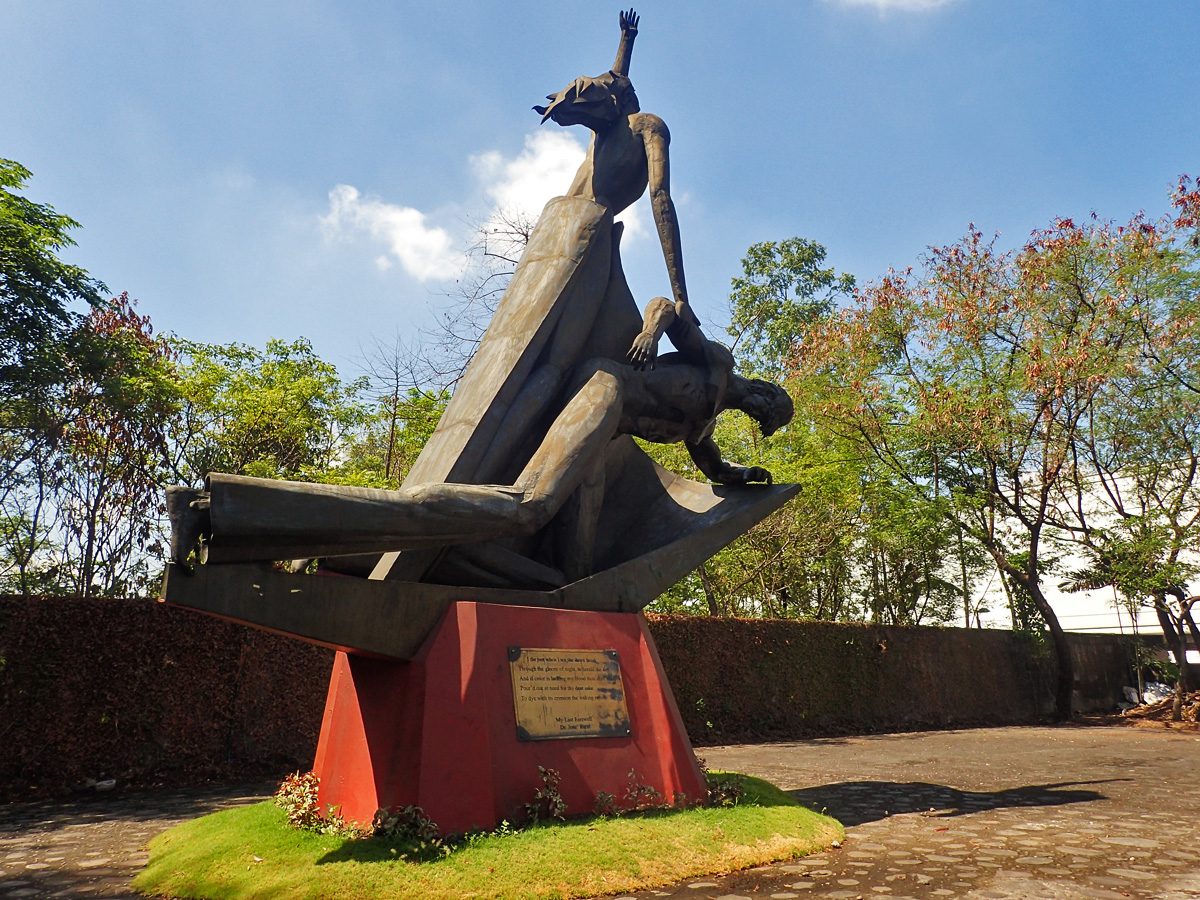
The words on the tarp among the trees are a protest against Martial Law being declared ever again in the country.
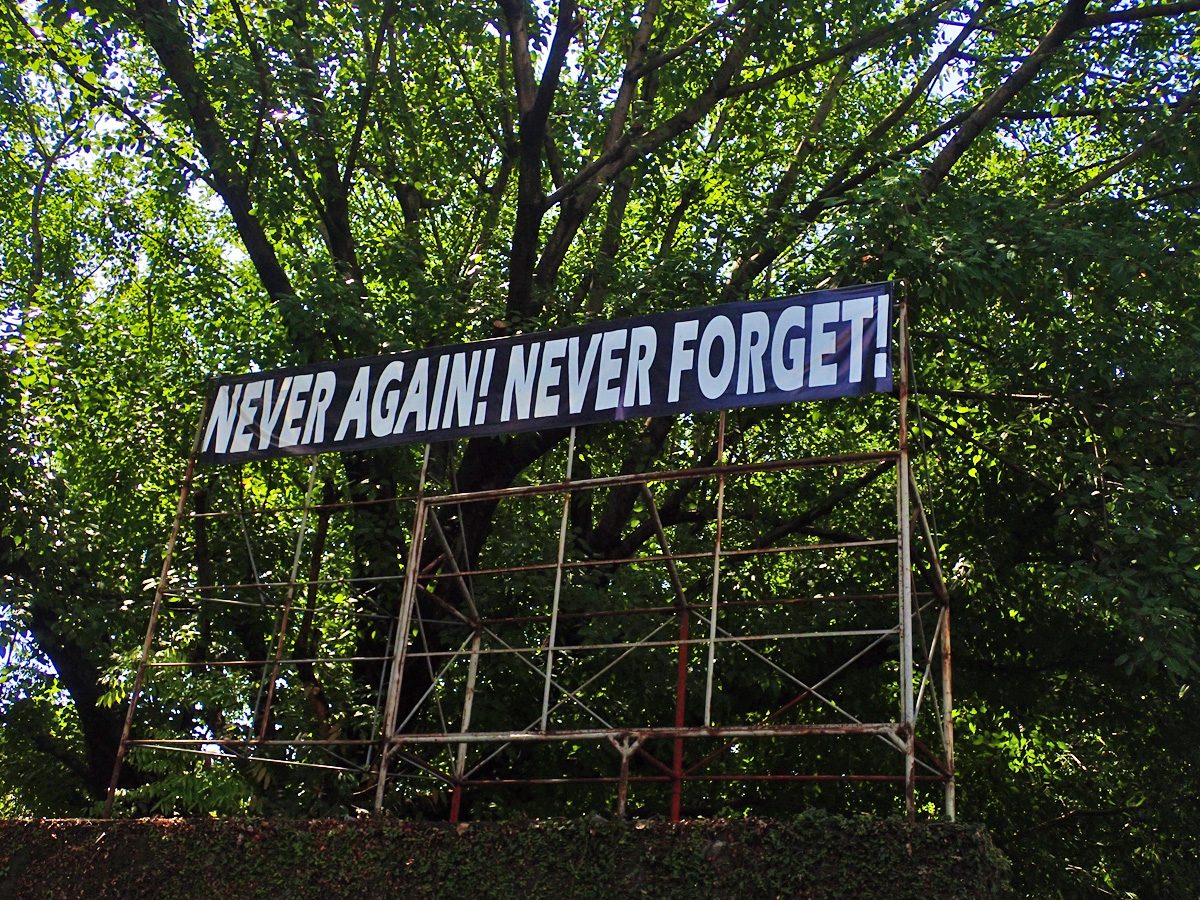
As you walk under the bodhi trees, turn right to the grassy expanse and at the end you will find the “Wall of Remembrance,” inscribed with the over 200 names of the heroes and martyrs “who offered their lives for freedom, justice, and truth” as written on the wall. A few or some of them might be familiar: Aquino, Benigno Jr. Diokno, Jose. Hilao, Liliosa. Dulag, Macliing. Over half of the names on this wall are from the youth.
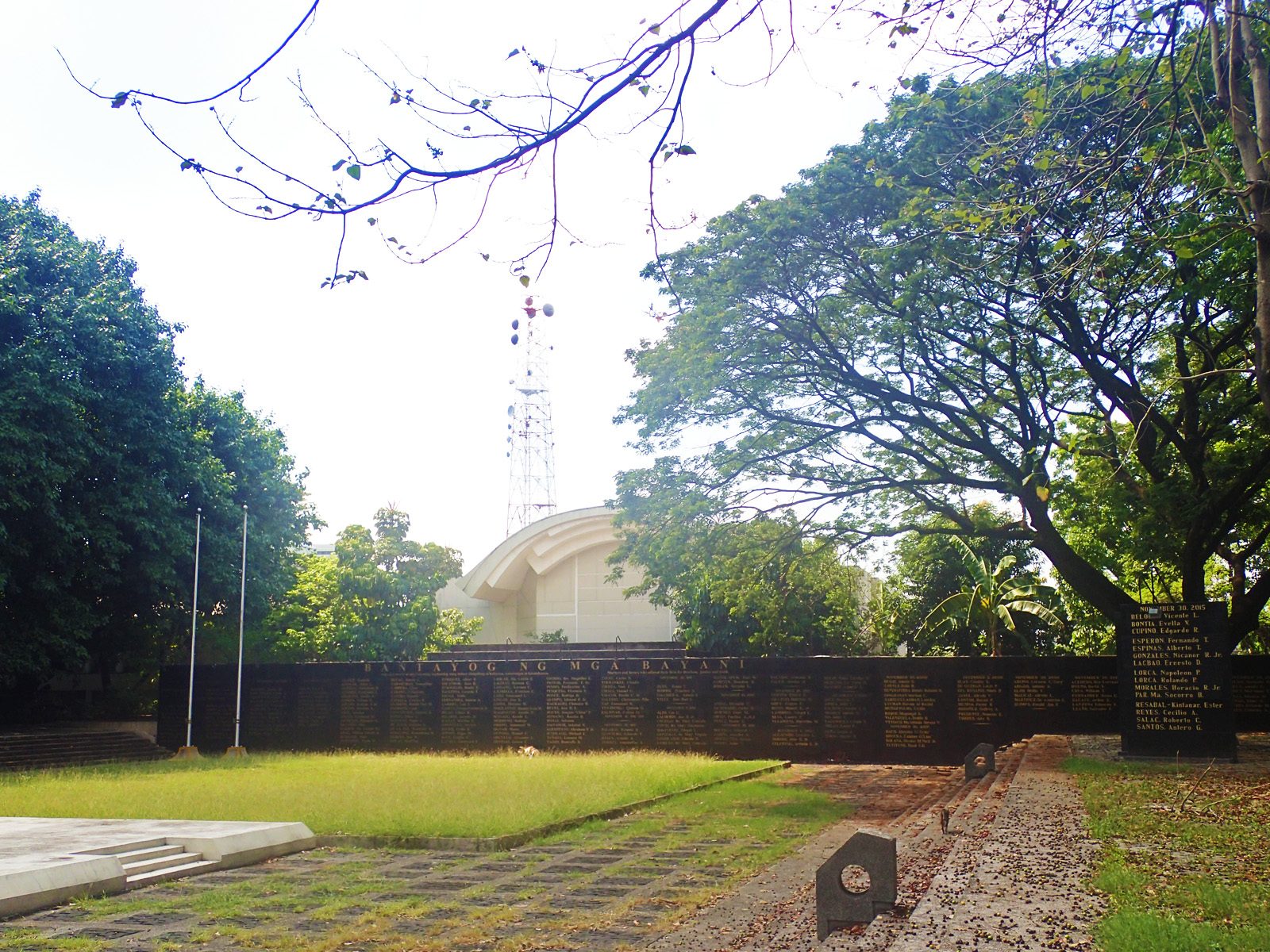
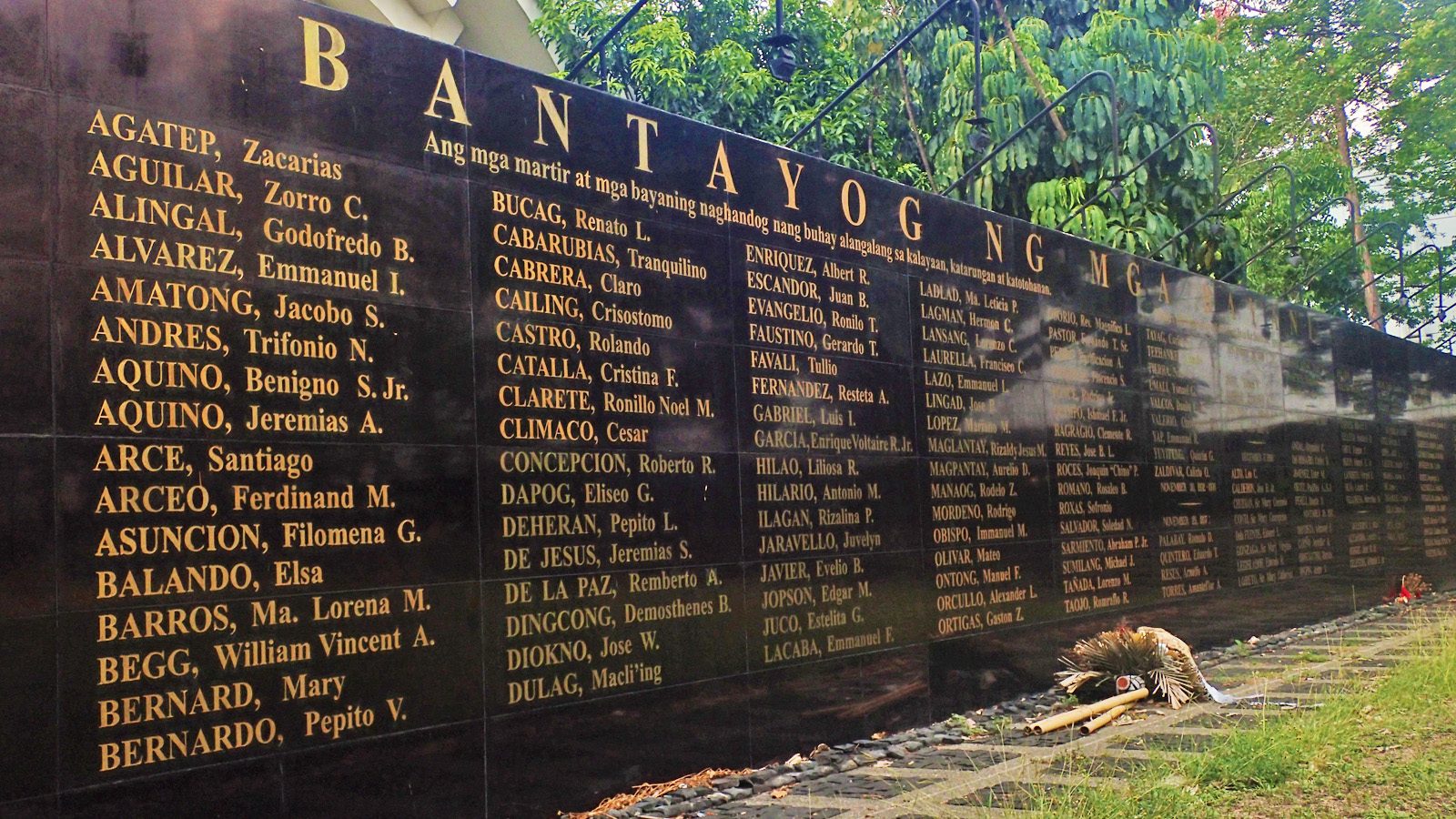
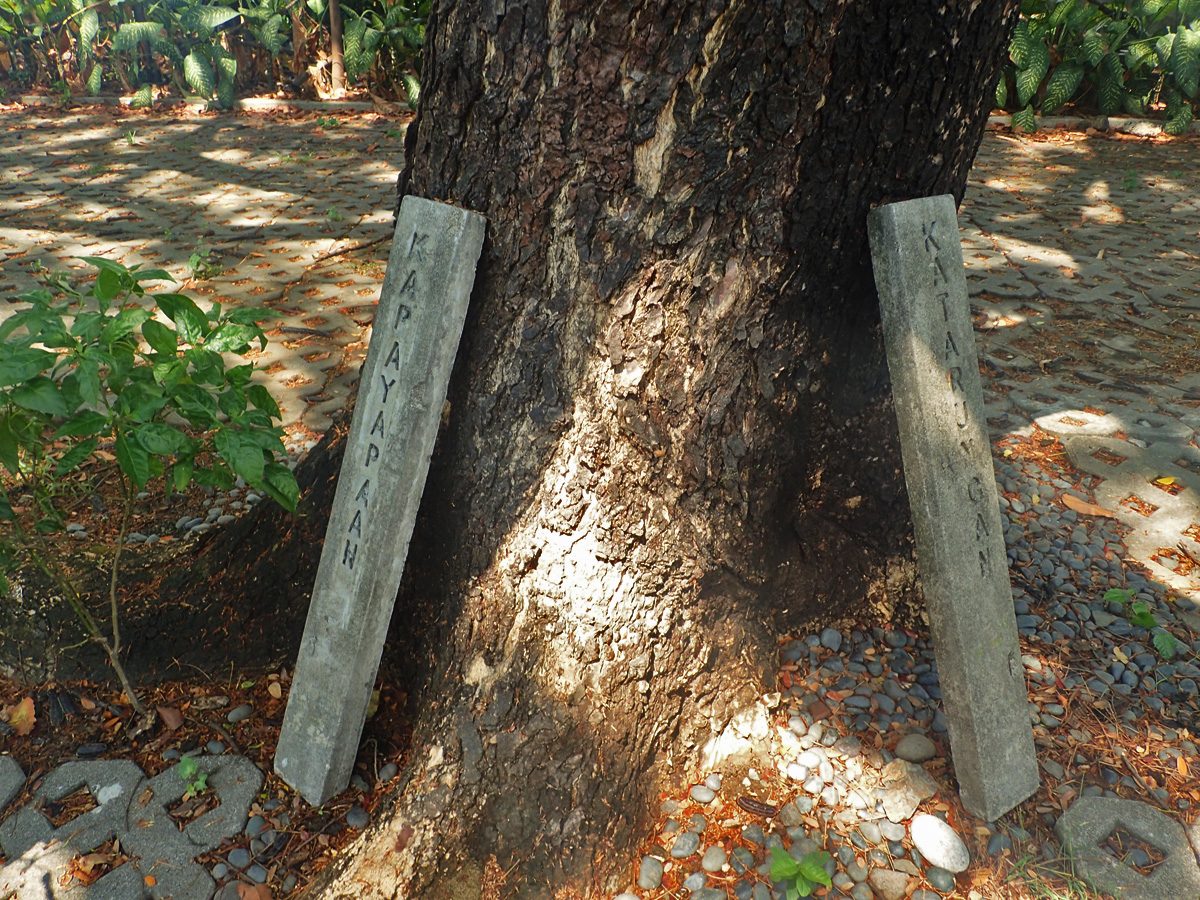
And, if you are not familiar with them, you will be later on, as you enter the Bantayog’s main building with Martial Law exhibits and memorabilia, and, if you go an a one-and-a-half-hour guided tour of the Bantayog grounds and museum. The names on the wall represent people from different sectors: students and youth, teachers, artists, journalists, laborers, farmers, indigenous people, church workers, politicians, businessmen and women.
When you enter the main building, the Jovito Salonga building, named after the lawyer, senator and opposition leader during Marcos’ dictatorship, your eye may naturally be drawn to your left. This is where life-sized wooden sculptures of bodies pierced with nails and paintings depicting different social realities during Marcos’ time can be found.
The wooden sculpture, titled “Utang na Labas,” shows how “pako sa utang” (nailed by debts) the Filipinos are due to the debt incurred by the country during Marcos’ rule, according to a Bantayog tour guide. Filipino taxpayers will continue paying up to year 2025.
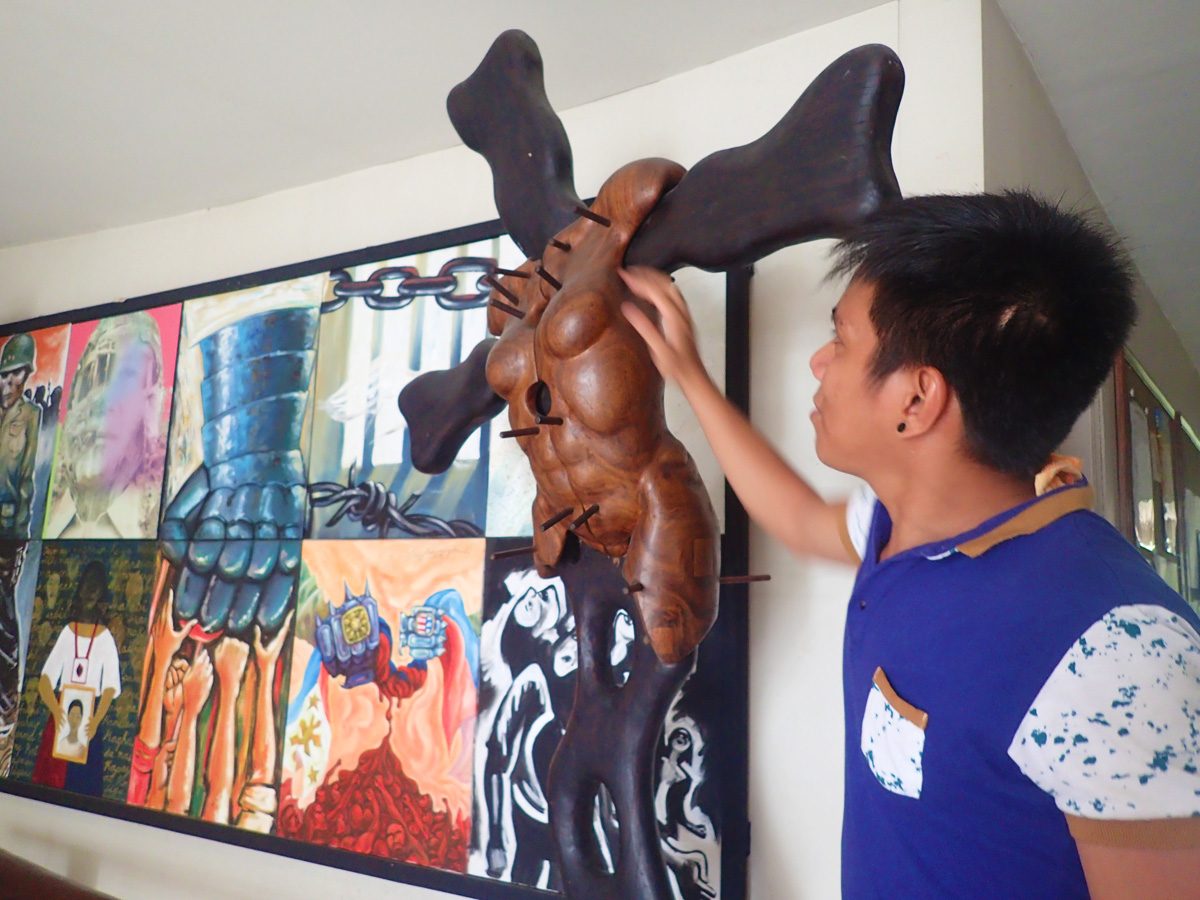
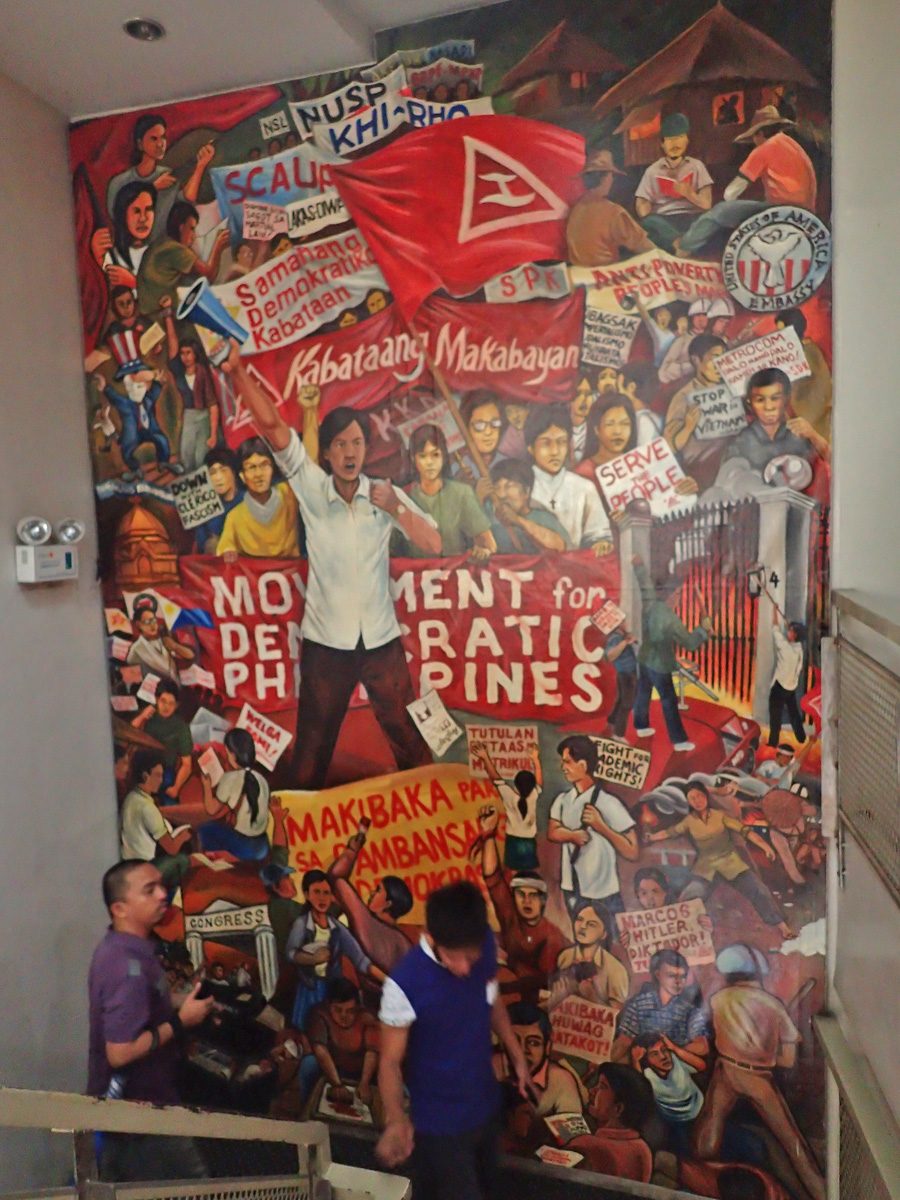
On the second floor is the “Hall of Remembrance.” Here you will find the stories of the heroes and martyrs listed at the “Wall of Remembrance” outside. They are grouped according to the sector they belong to – students, church workers, indigenous peoples, among others. There are also photos and memorabilia of some of them.
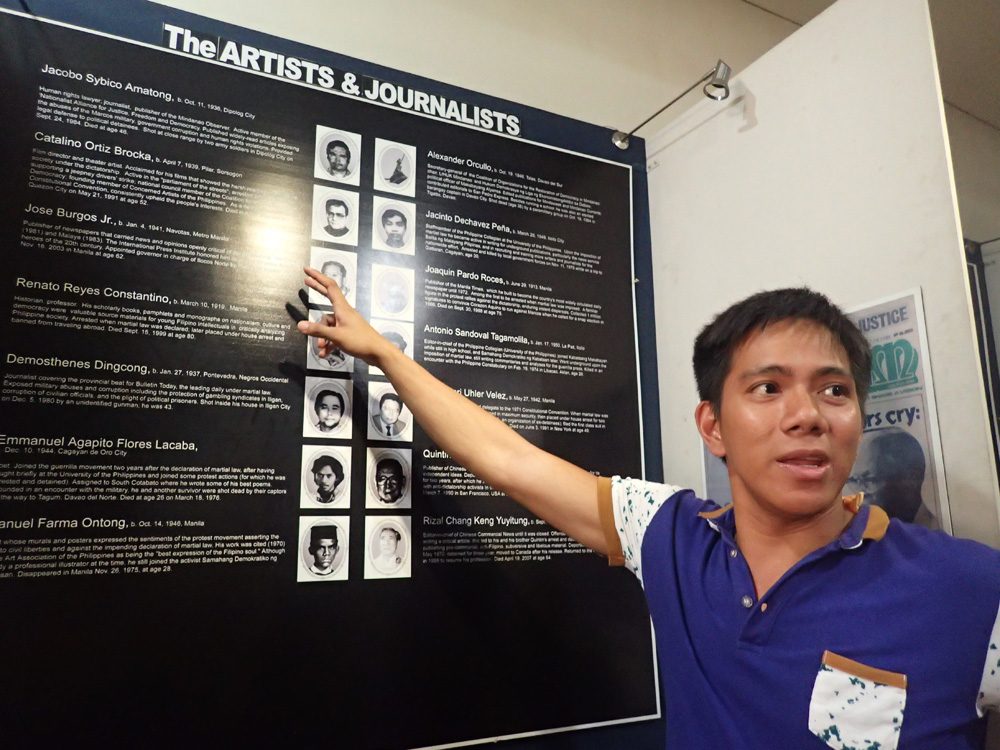
Liliosa Hilao, who was the first to die under detention during Martial Law, is arguably among the most unforgettable names at the Hall of Remembrance. Hilao wrote articles critical of the Marcos regime for her school paper at the Pamantasan ng Lungsod ng Maynila. She was arrested, tortured, and even possibly sexually abused.
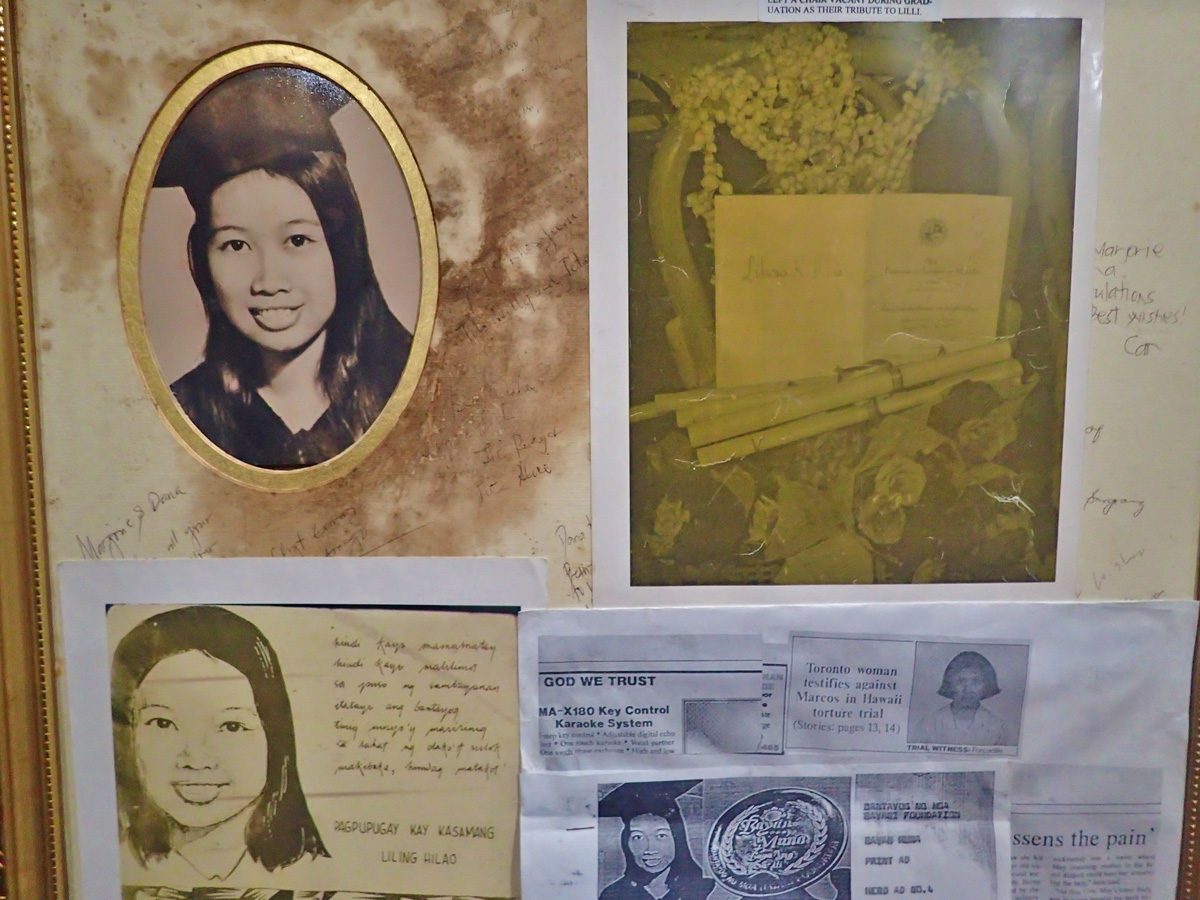
In an academic paper by historian Michael Charleston Chua, he writes how Hilao was tortured. While the military claimed Hilao had committed suicide by drinking muriatic acid, her body bore marks of torture, and her mouth an ashtray of cigarette wounds. Her mother recounted the brutal treatment of Hilao’s body: her head was cut, and her lower body up to her vagina was sawed up. Her brain and her stomach were taken out and torn to pieces, placed in a pail with muriatic acid, and were later brought to her wake.
The Hall of Remembrance also tells the stories of heroes and martyrs all over the Philippines, from Luzon to Mindanao.
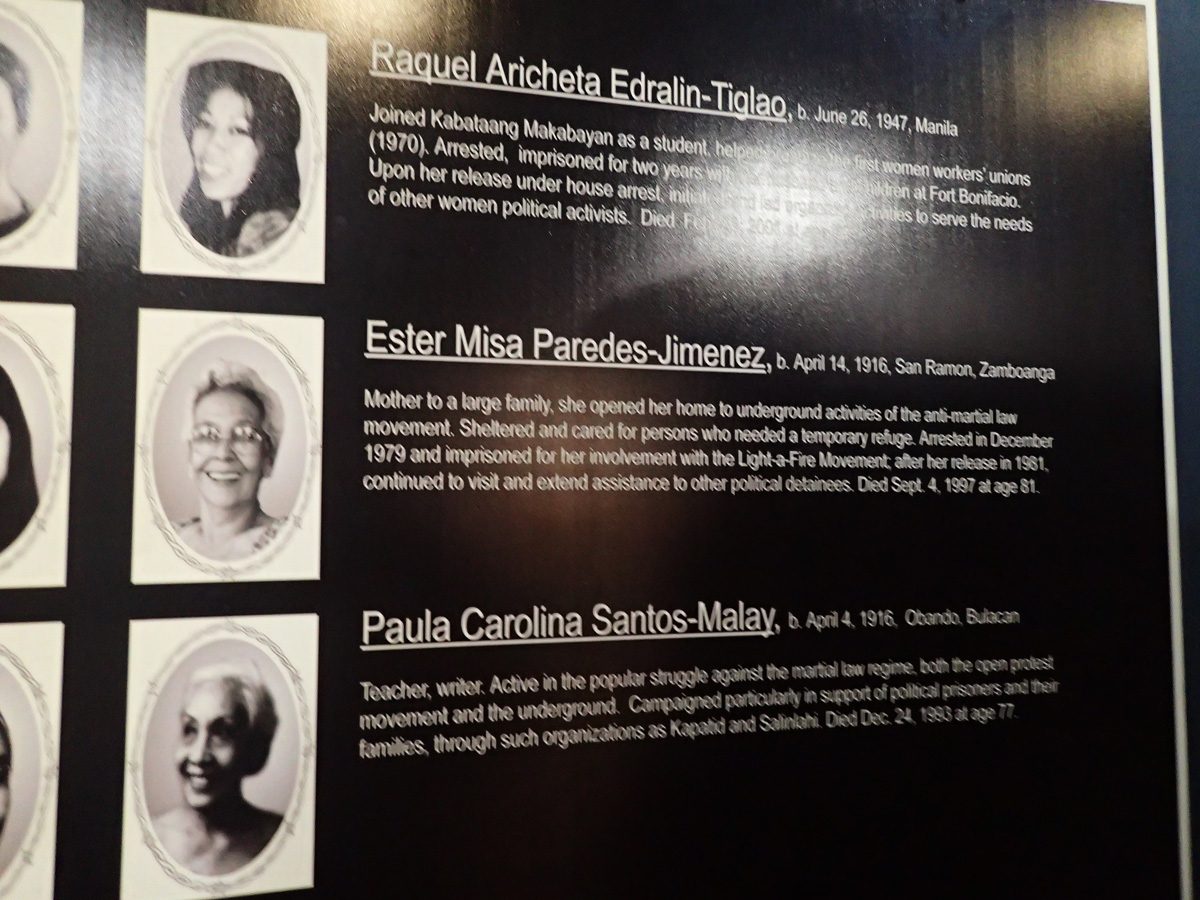
Even the Ilocos region, which is arguably Marcos country, had its own share of heroes.
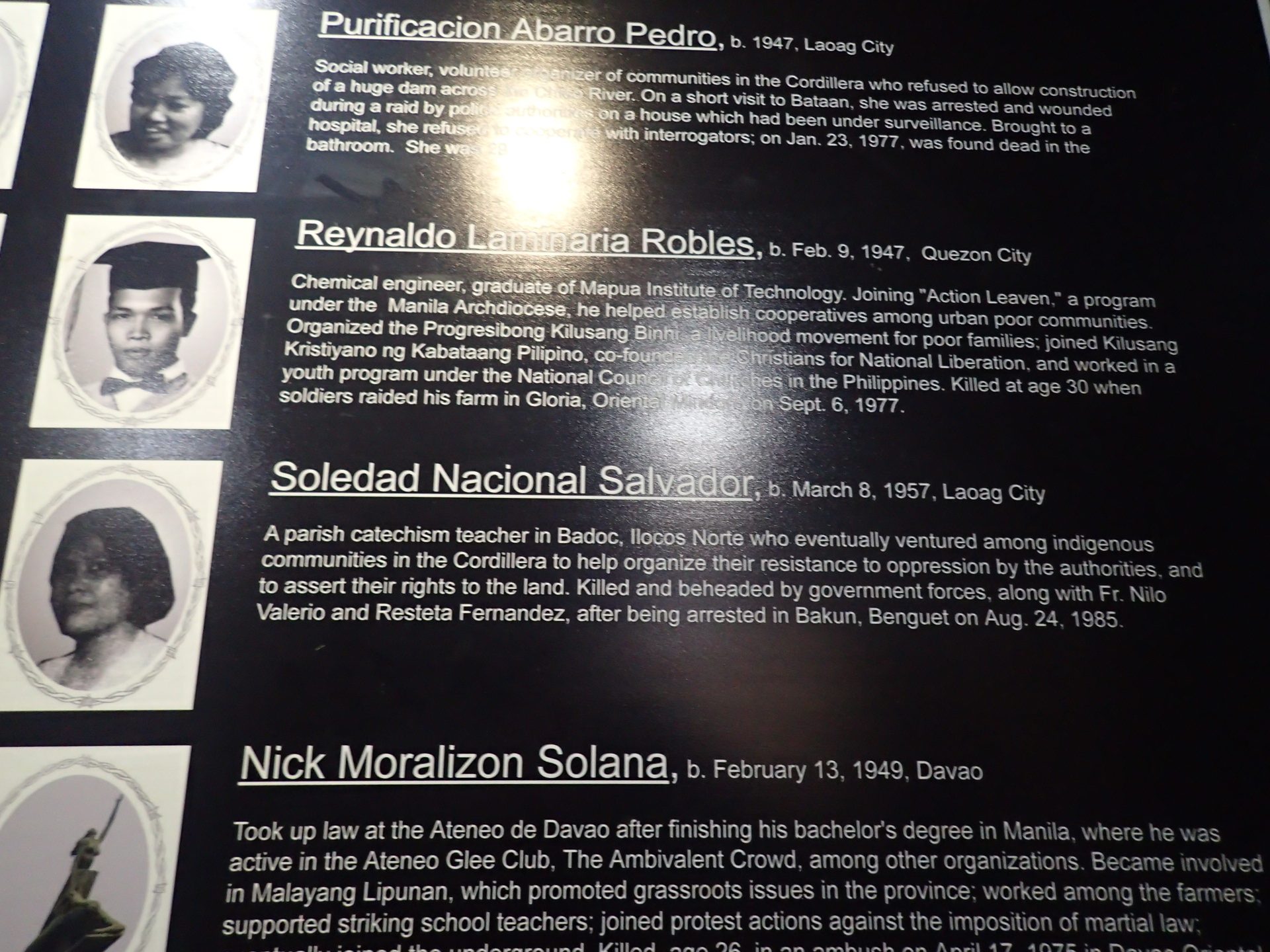
Indigenous leaders like Macliing Dulag made an impassioned case for their people’s right to their land, which would have been flooded had the Marcos regime’s Chico Dam construction project pushed through that time.
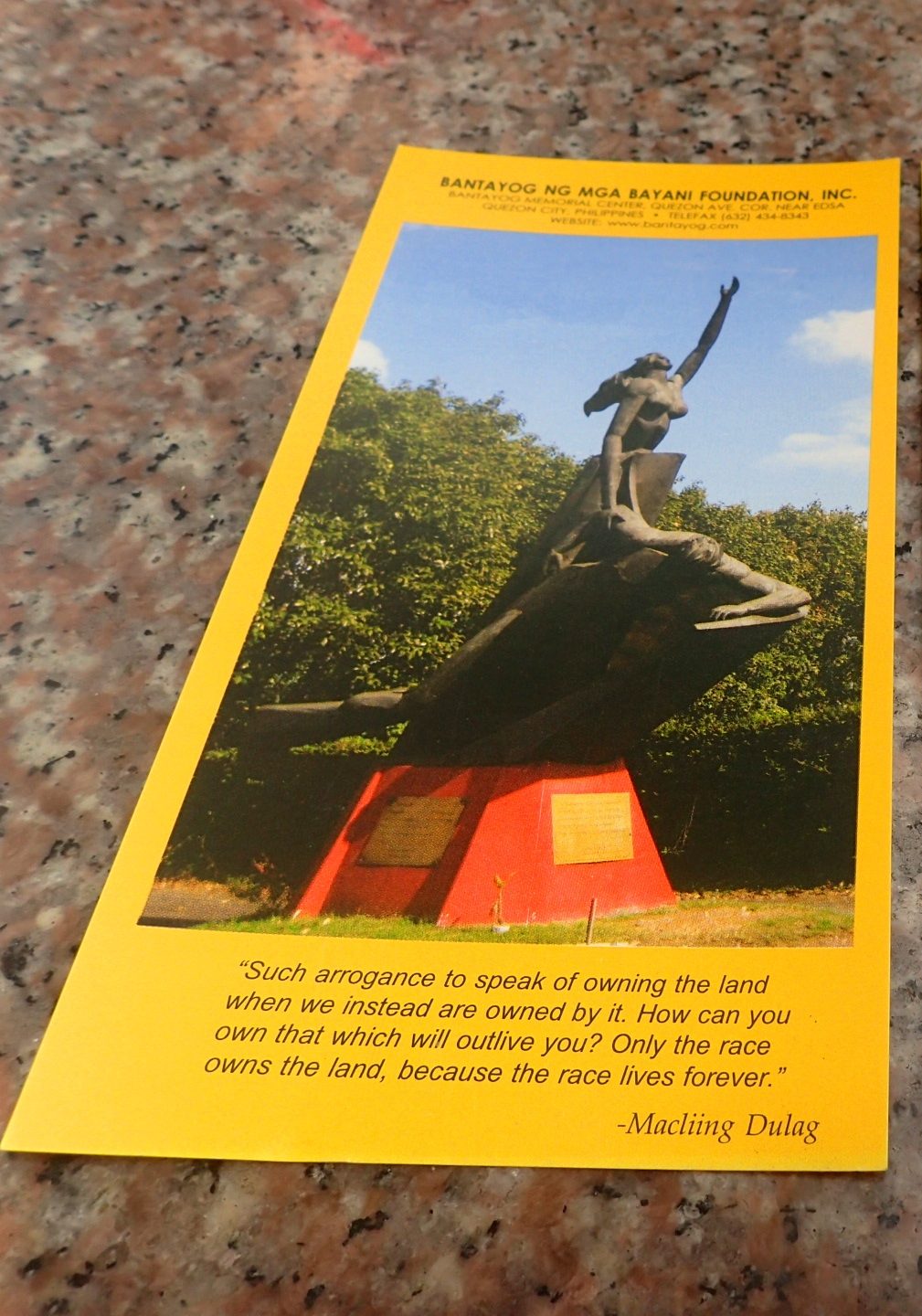
These are only some examples of heroes’ stories at the Hall of Remembrance. You can easily take around 20 minutes or so reading all the narratives here.
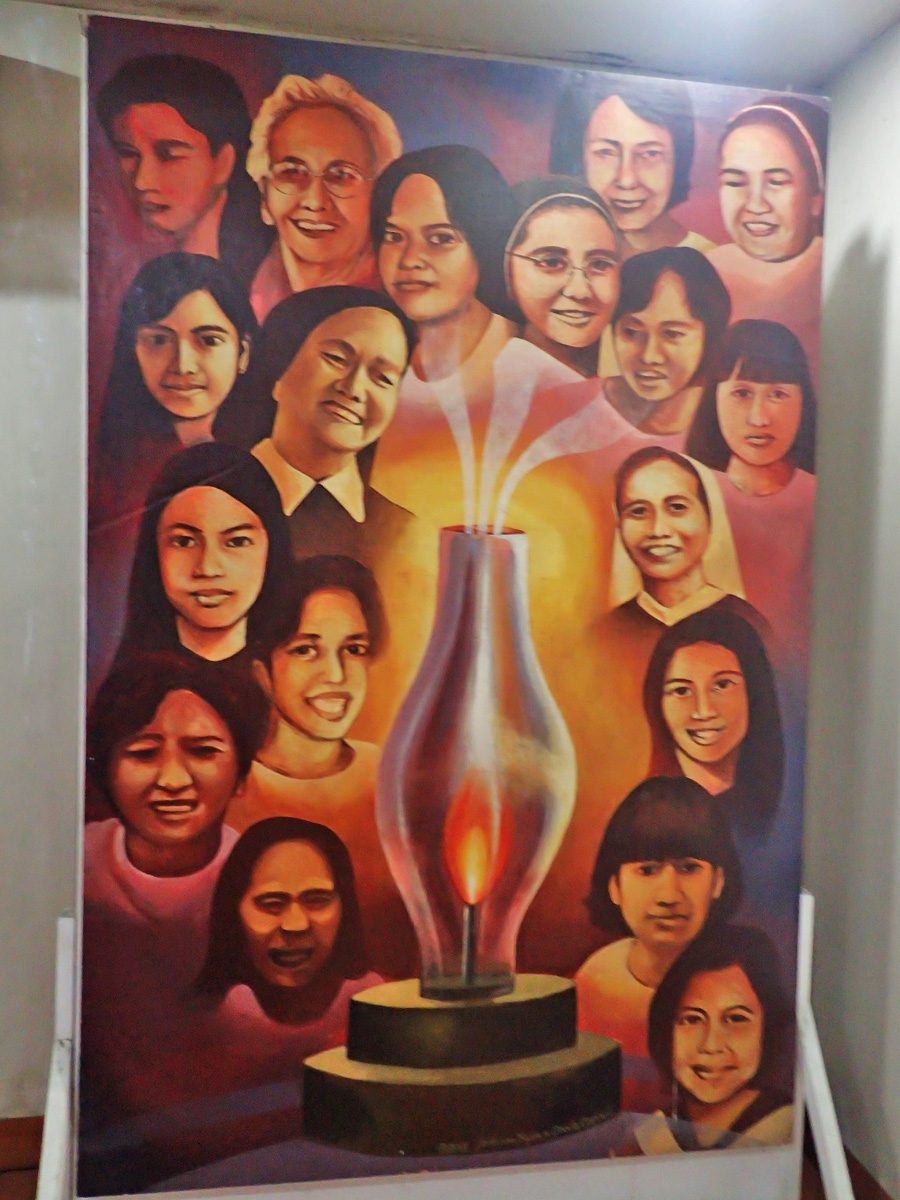
On the same floor as the Hall of Remembrance is the Bantayog museum.
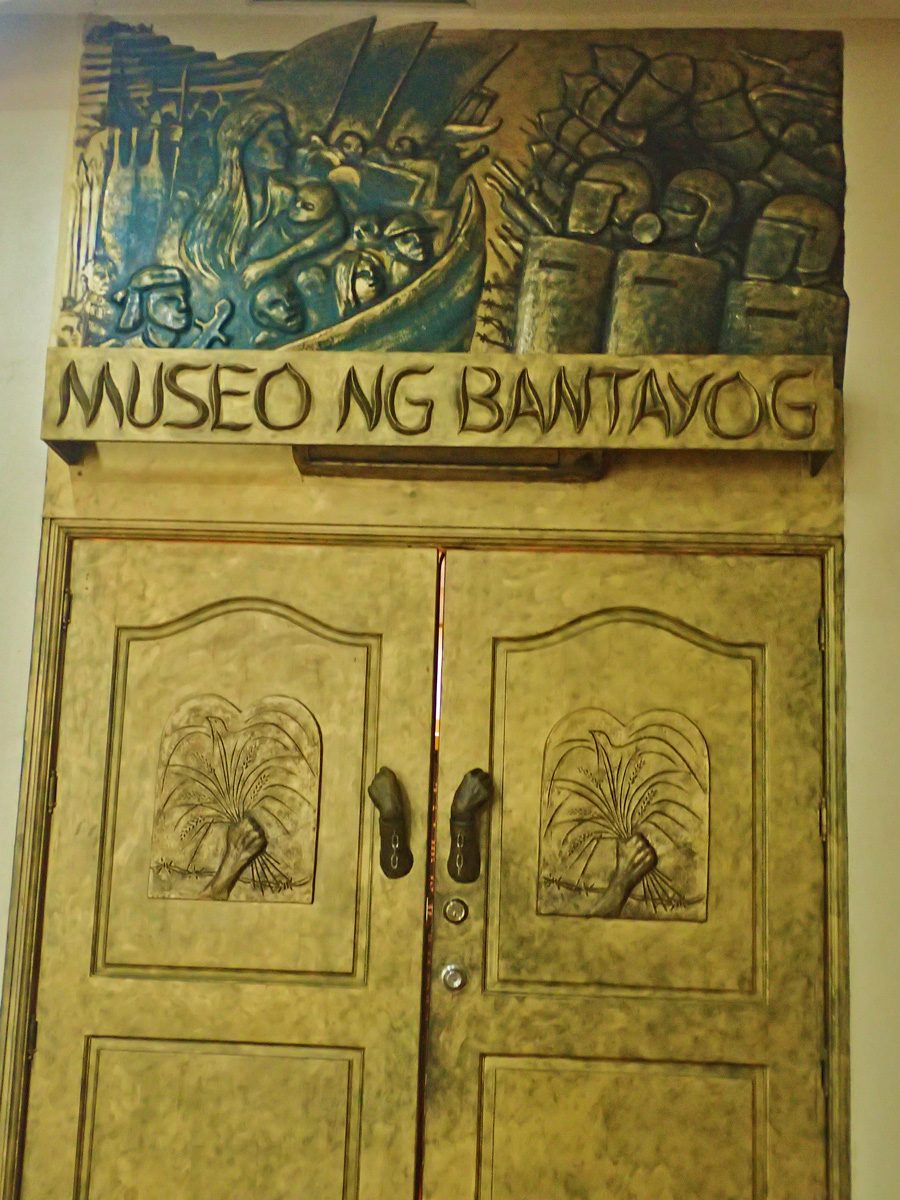
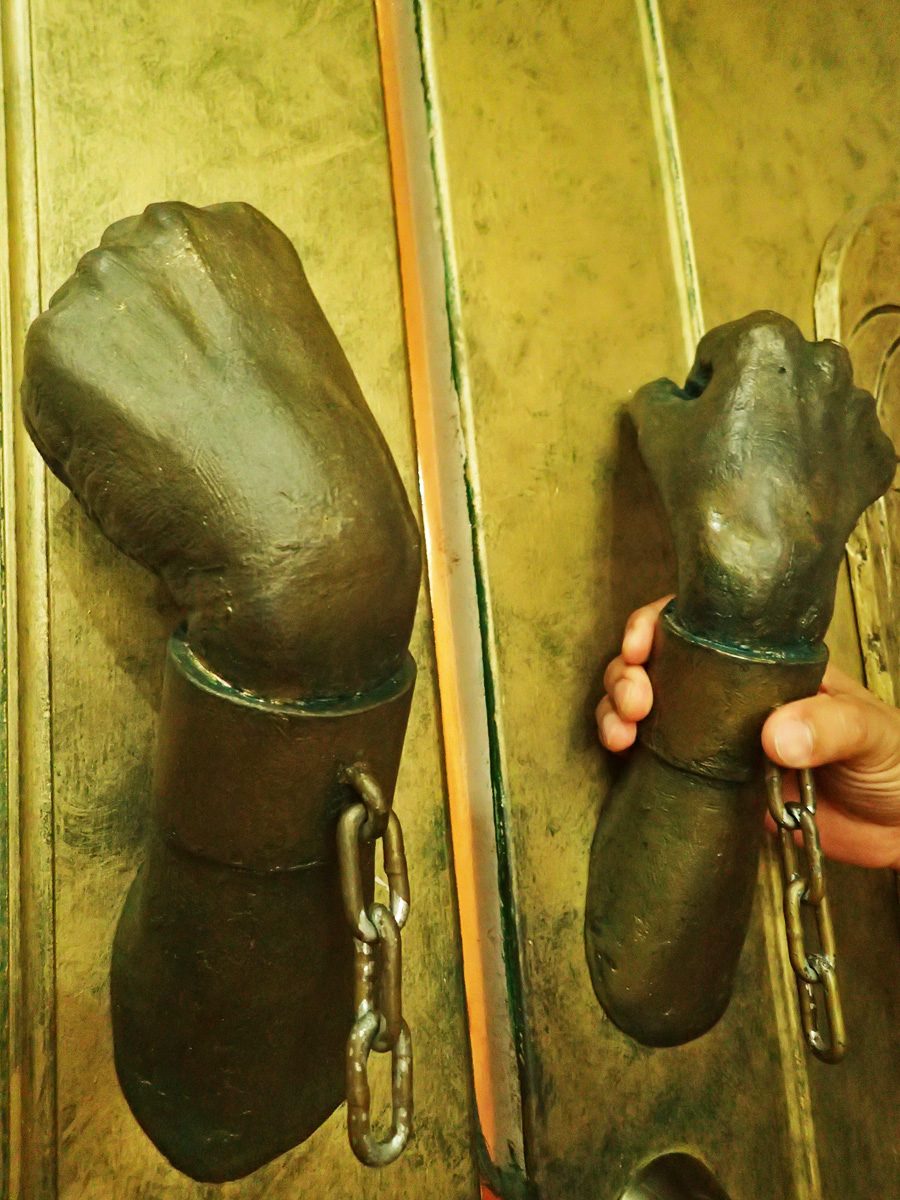
The museum displays photos, clippings from old newspapers, mounted information, and memorabilia of the Marcos regime, though it also includes photos prior to that period, to give more context and perspective on Martial Law.
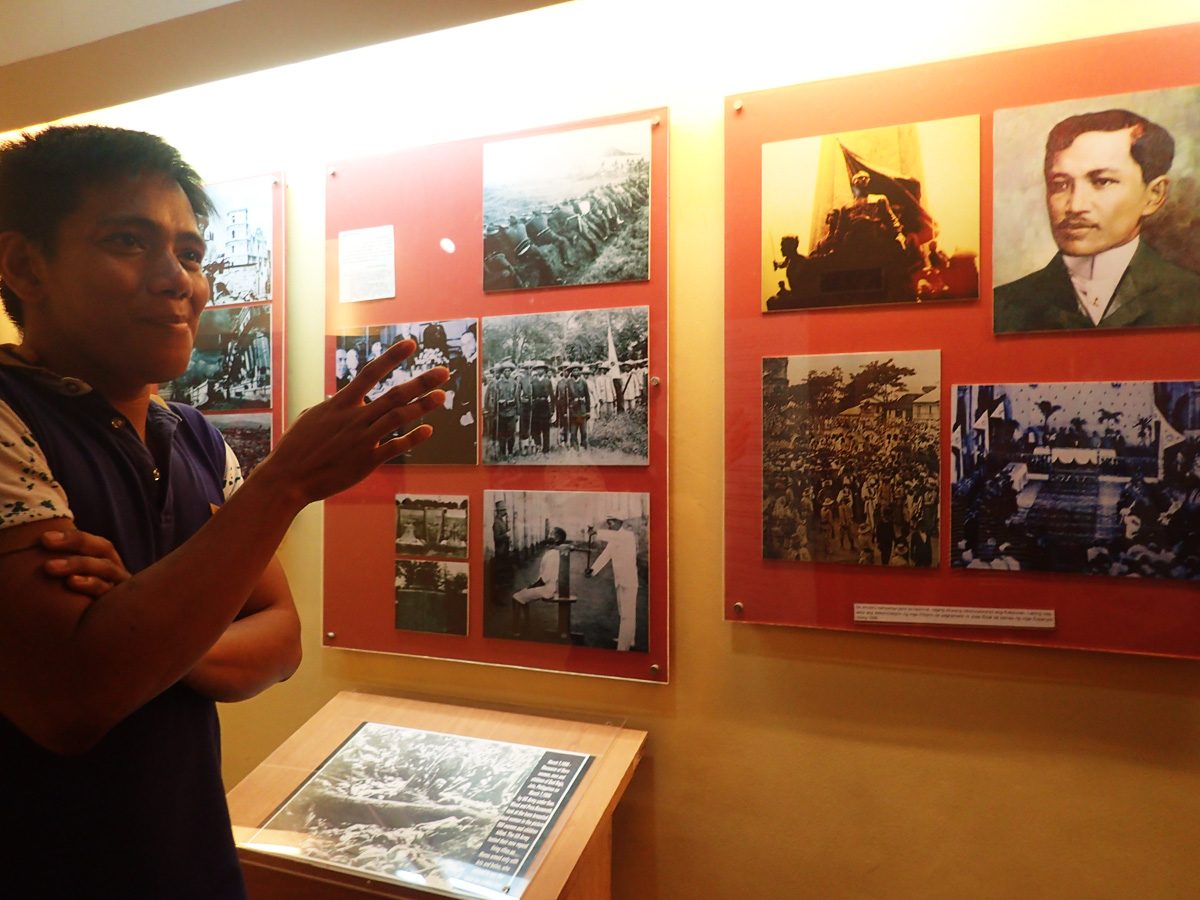
There are also scale models and life-sized depictions, like that of then-senator Jose Diokno speaking before the crowd of Plaza Miranda when the writ of habeas corpus was suspended. Upon its suspension, Diokno resigned in protest from Marcos’ Nacionalista party.
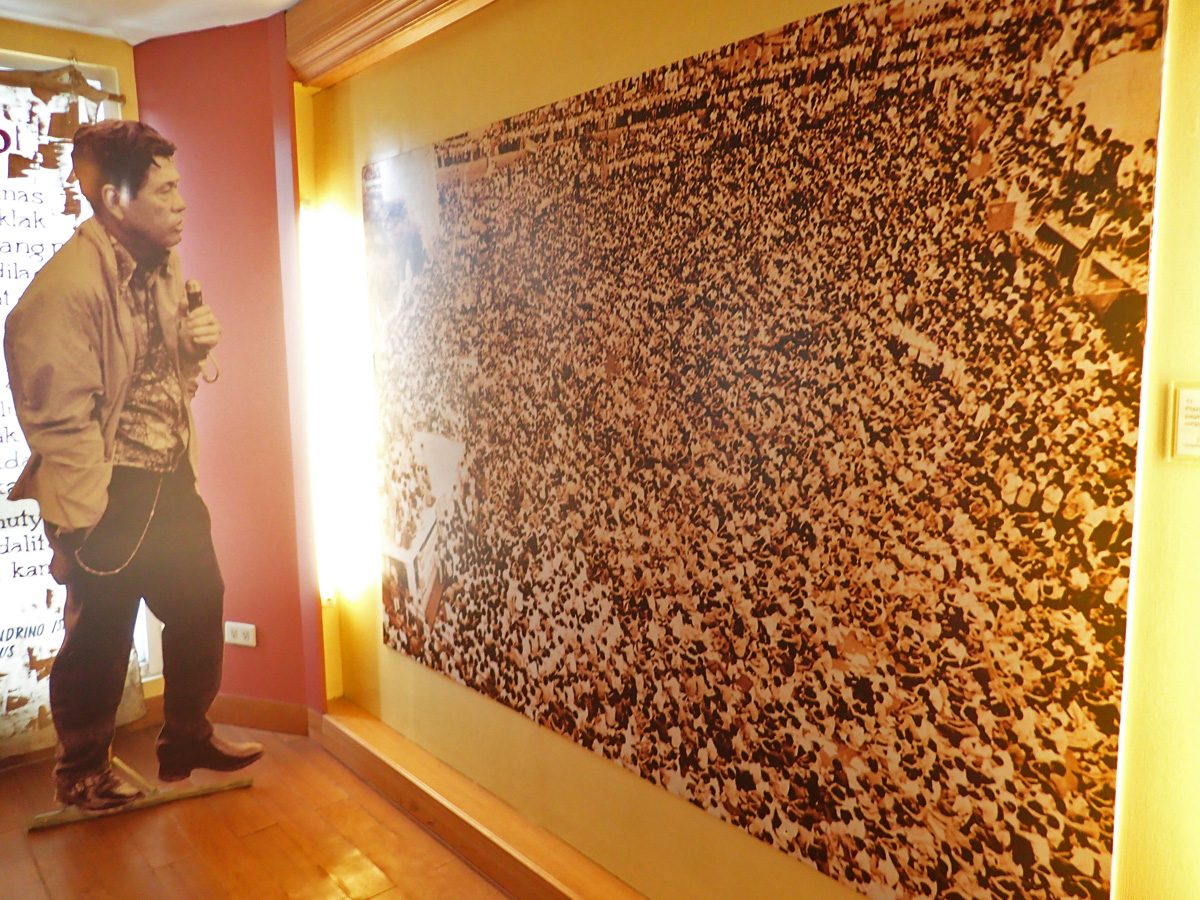
Instead of regular curtains, lyrics of nationalistic and protest songs on cheesecloth drape over windows.
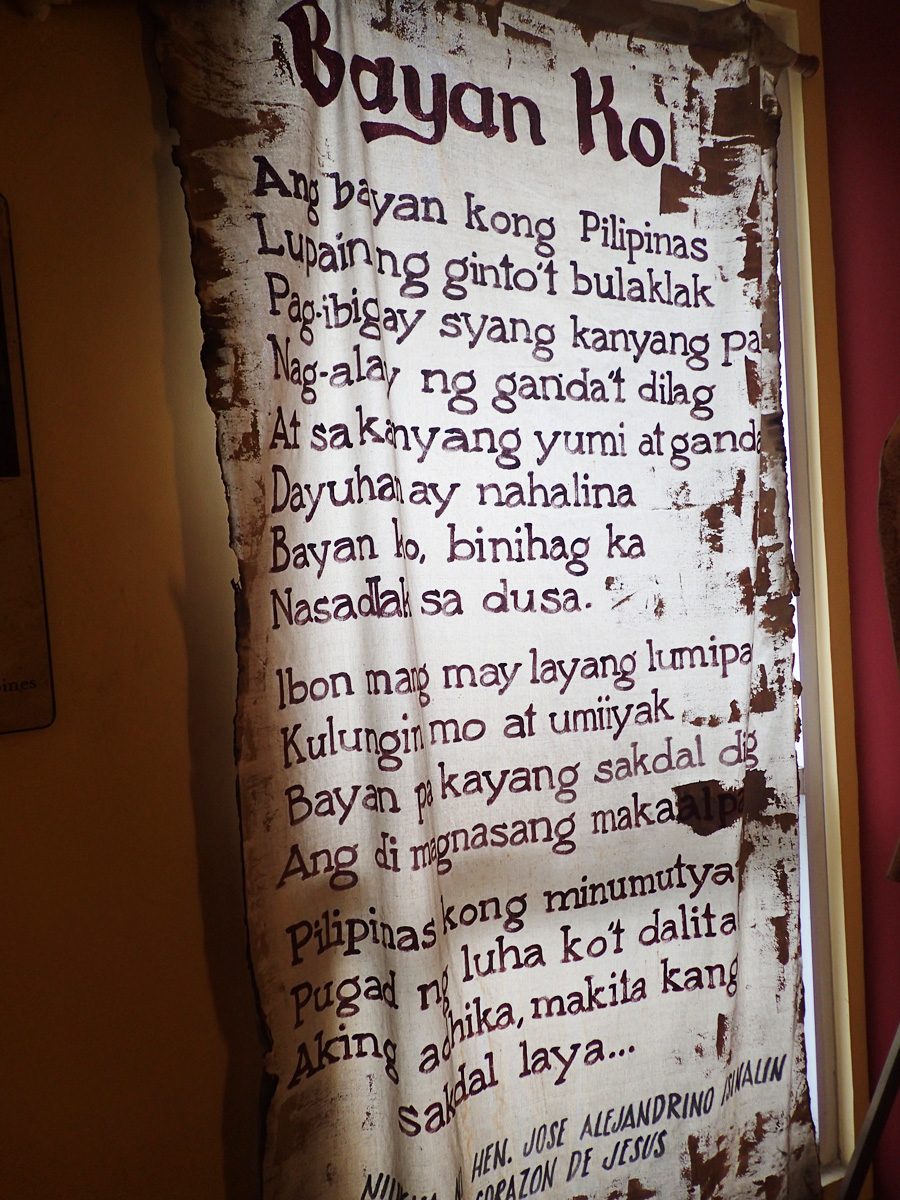
Other materials considered subversive by the Marcos government then are also displayed.
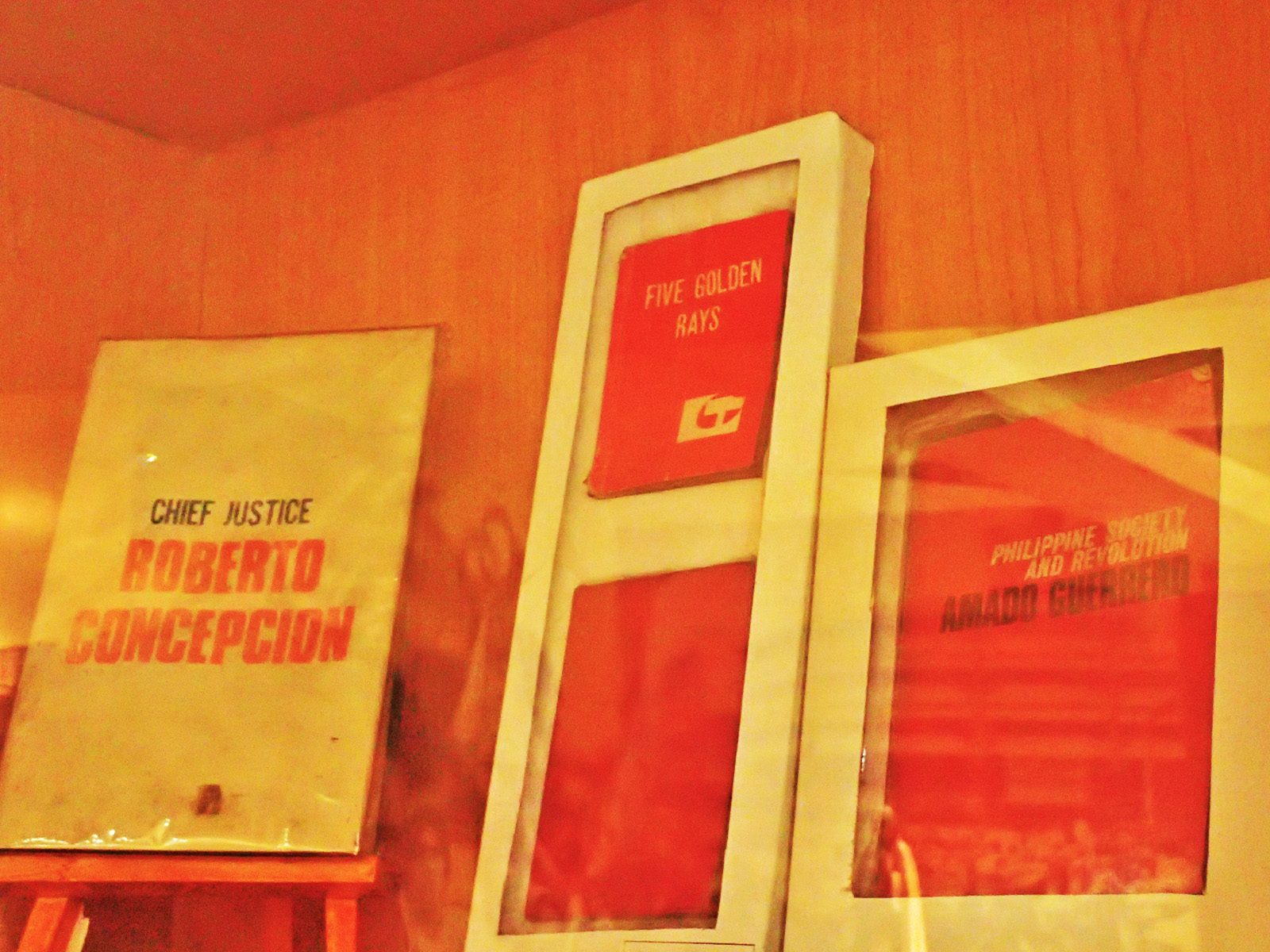
The museum also displays photos and mounted information of not-so-well-known events like different student protests and massacres the Marcos government is reported to be involved in, including the 1968 Jabidah Massacre, the killing of Moros from Sulu and Tawi-Tawi who were then being forced to fight against Sabah (which the government was trying to conquer), home of their relatives and fellow Moros.
One year after the massacre, the Moro National Liberation Front (the origins of Moro Islamic Liberation Front, or the MILF, now), was founded to wage an armed struggle for Moro independence.
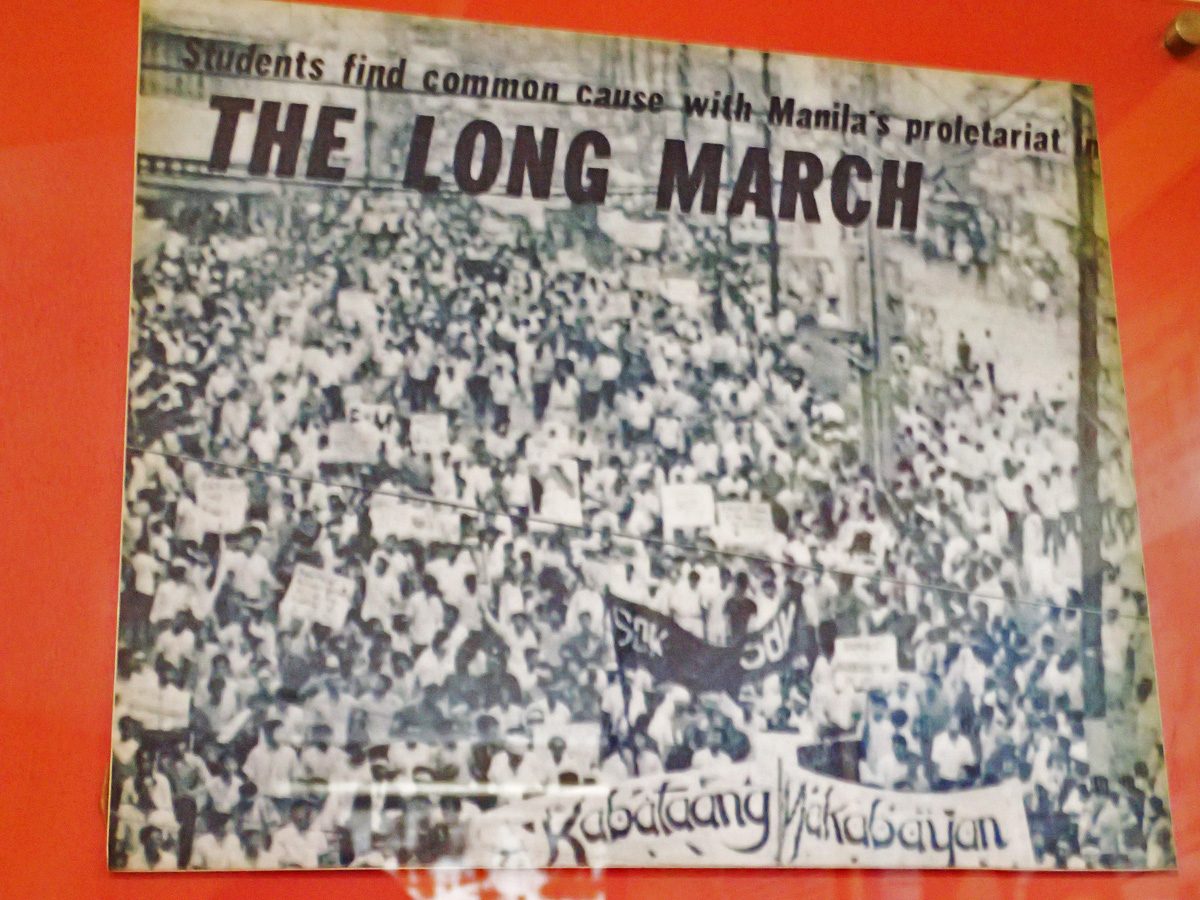
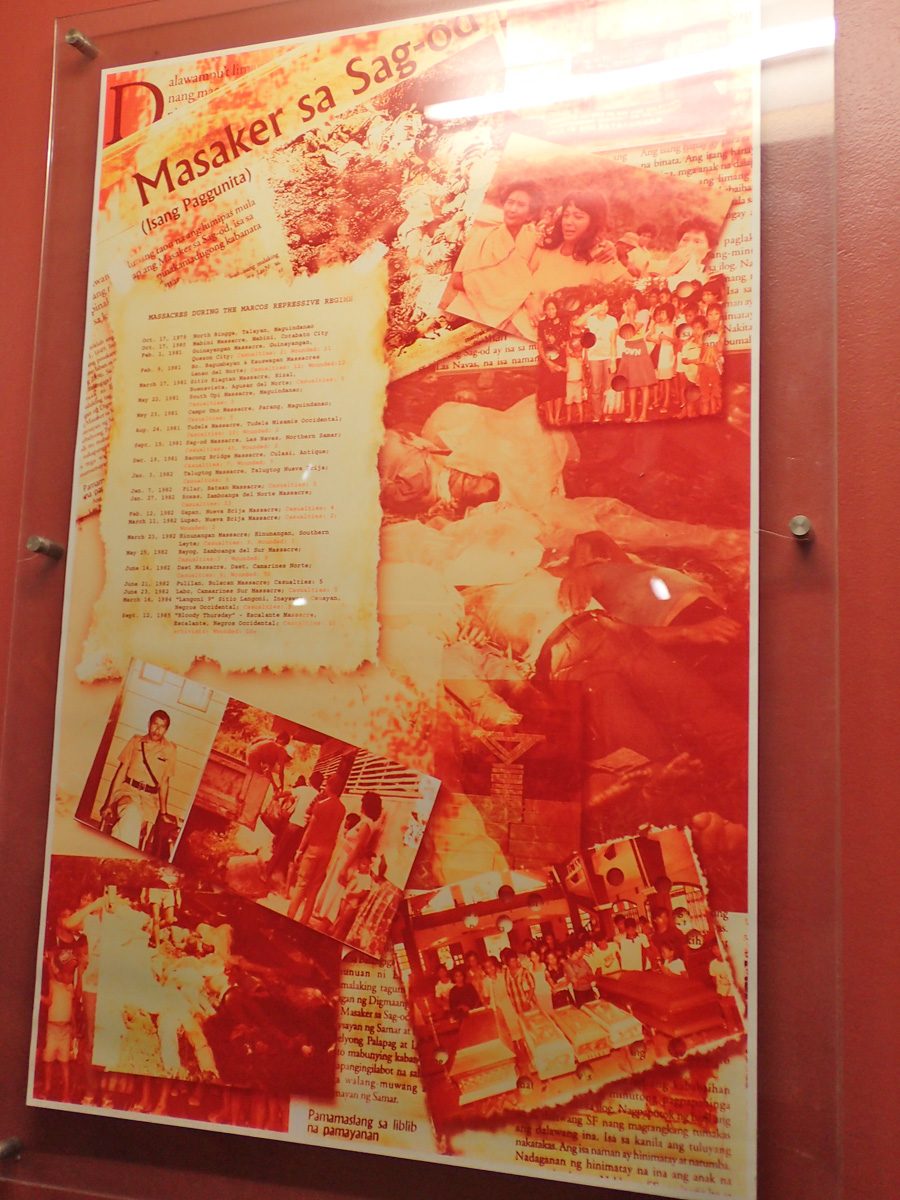
There are also newspapers back then with reports on important events, including the Martial Law declaration.
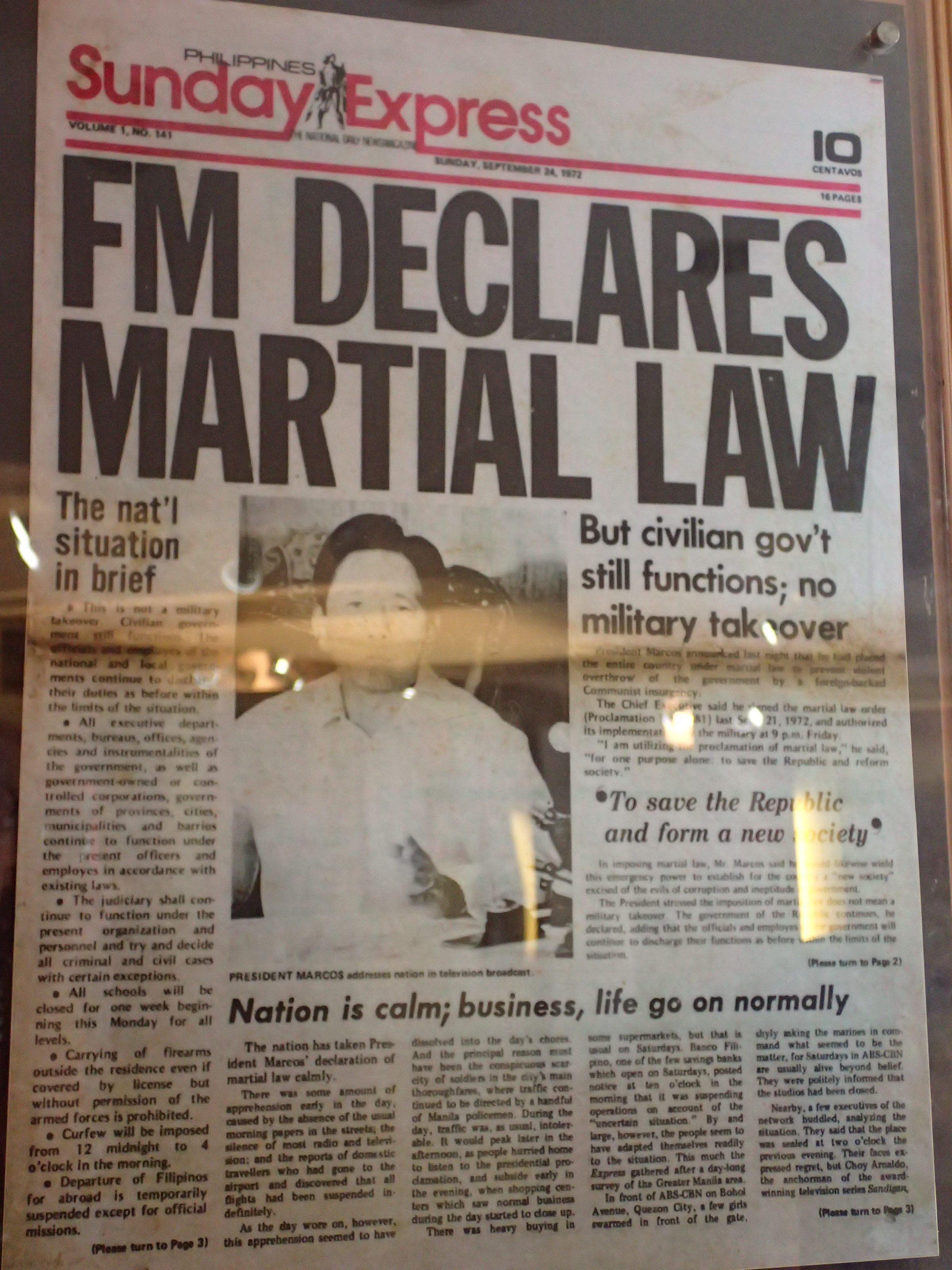
Farther down the museum, after the newspaper of the declaration on Martial Law, are illustrations of some of the different torture methods used on those arrested and detained. There were electrocution (usually of the genitals), wet submarine (submerging victim’s head in the water or toilet), Russian roulette (letting victims fire a gun usually loaded with blanks to their heads), among others. (READ: Worse than death: Torture methods during martial law)
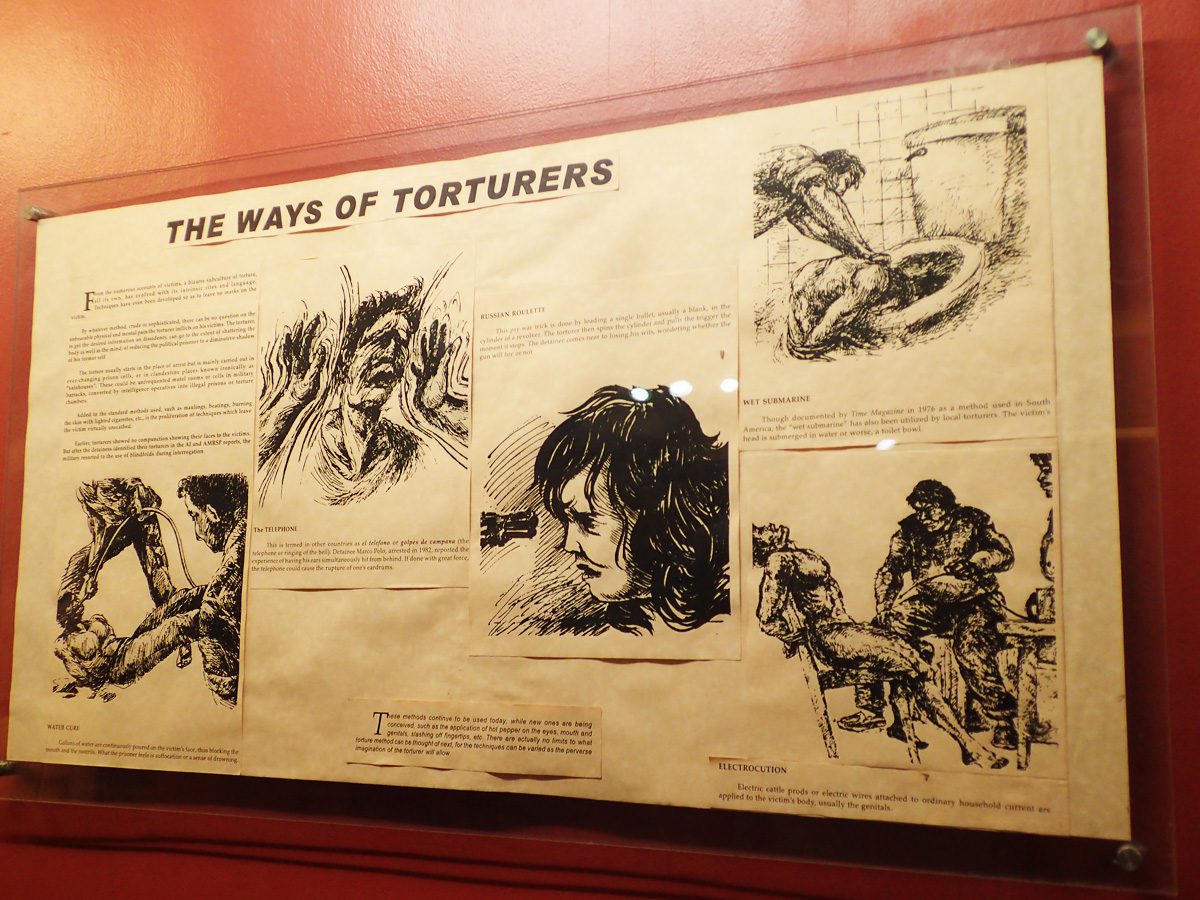
Perhaps most jarring among the museum displays is the re-creation of a jail cell where those arrested were kept during Marcos’ rule.
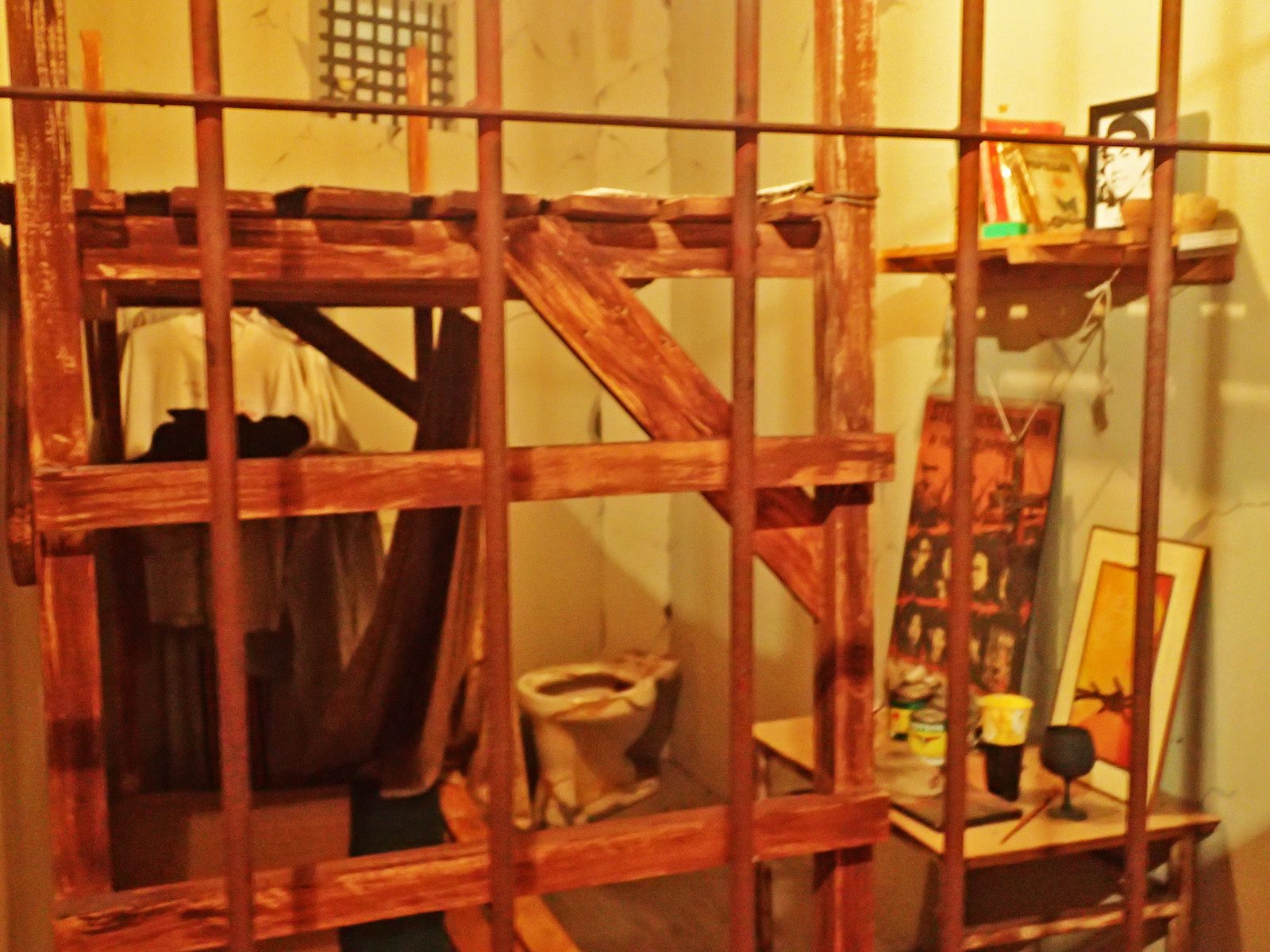
There are objects of hope, too. Among them are artworks by detainees, and collages of movements by different sectors like artists, teachers, and students.
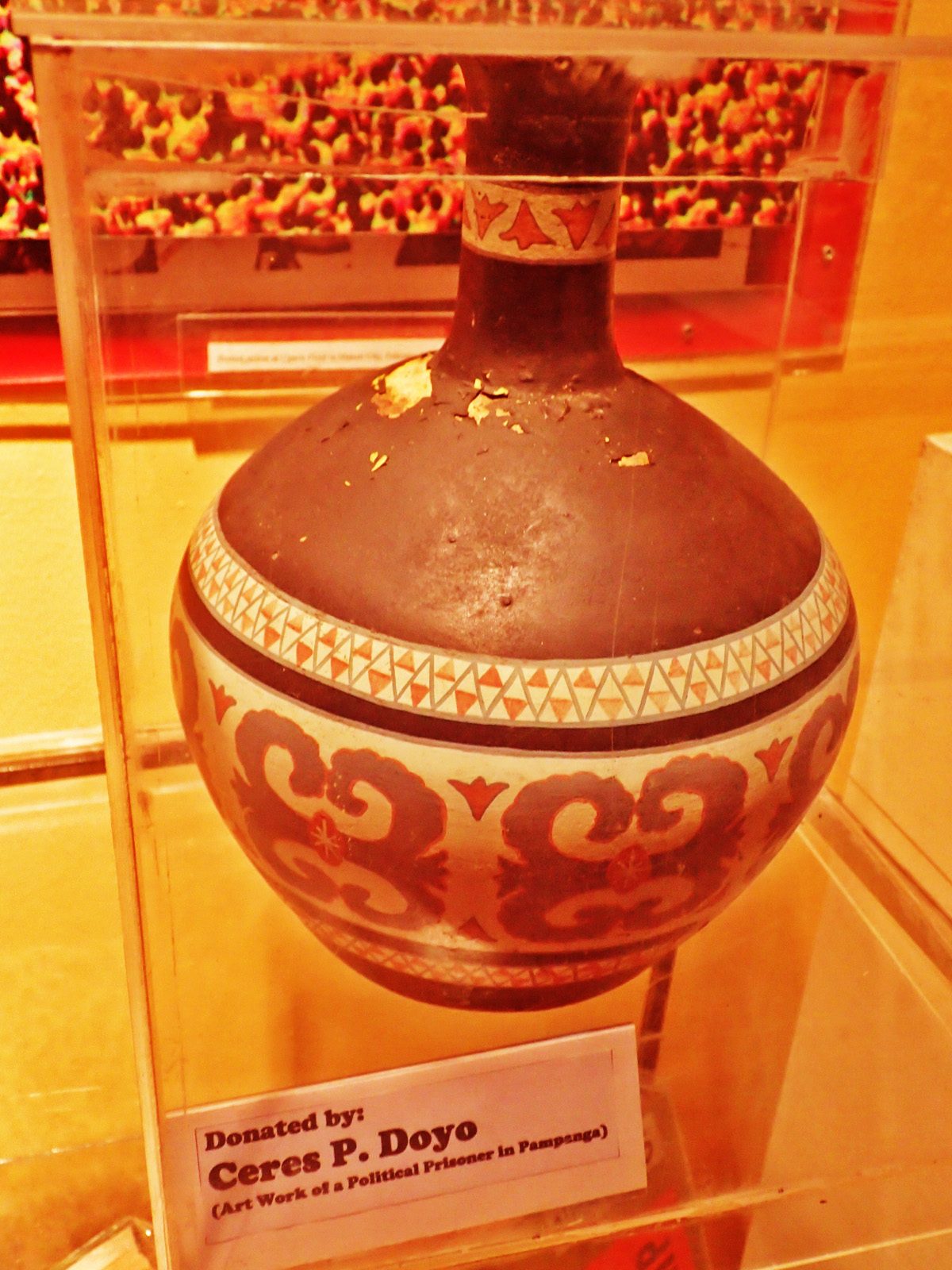
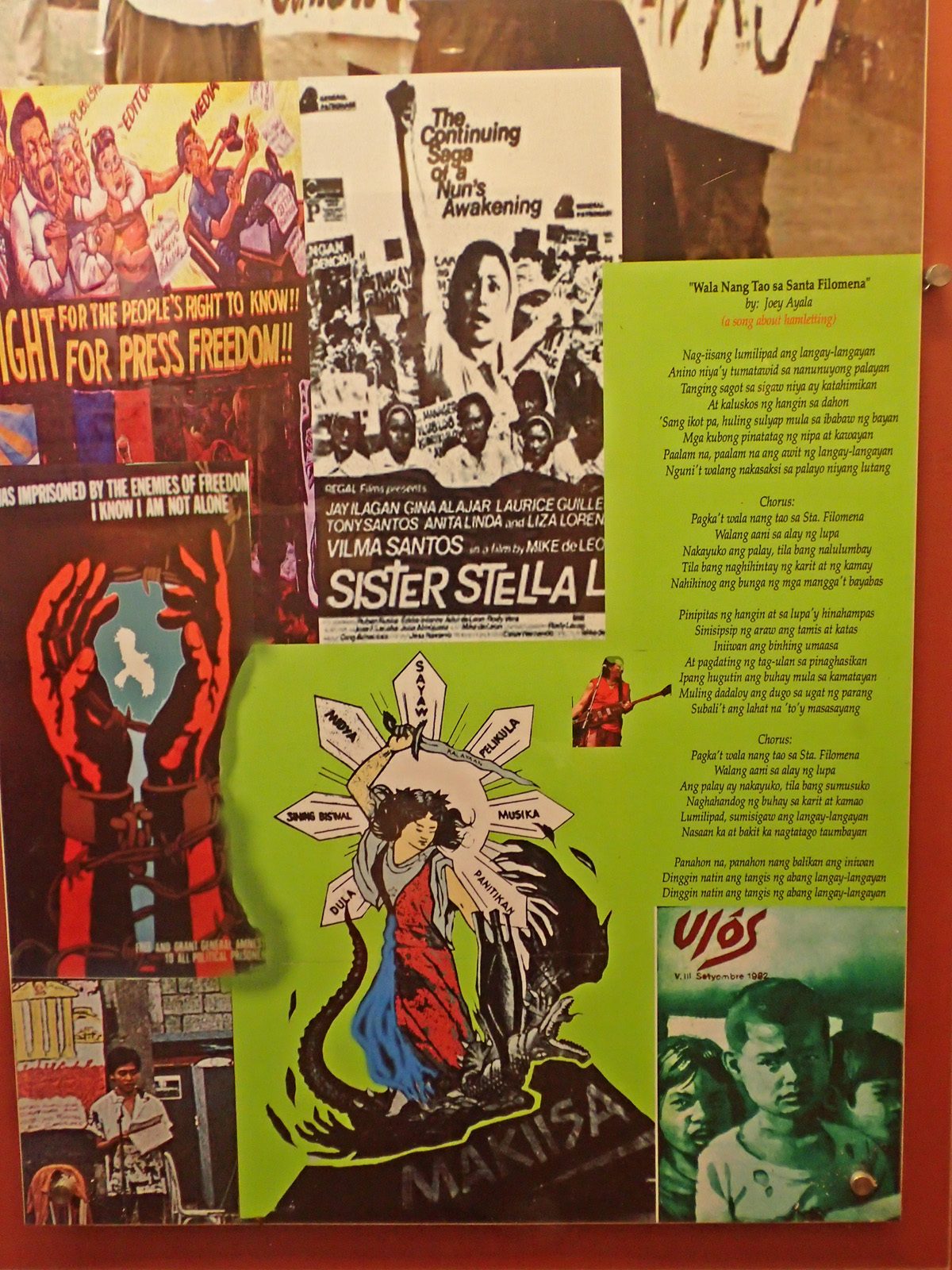
Towards the end of the museum exhibits, stands, as though a mere culmination or climax of all the events portrayed at Bantayog, the scale model of a tank during the 1986 People Power Revolution, and behind it, nuns and common Filipinos who marched along EDSA.
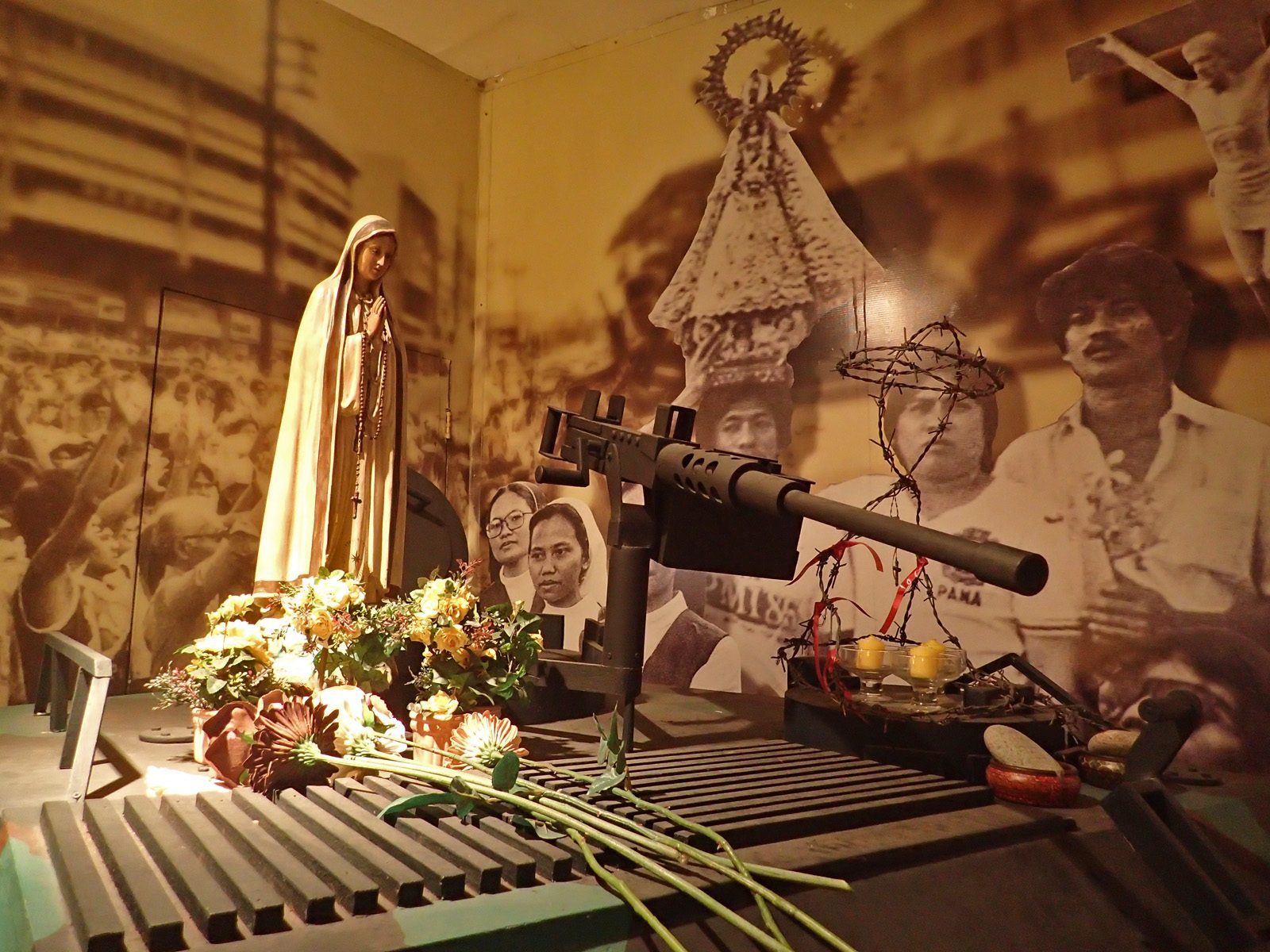
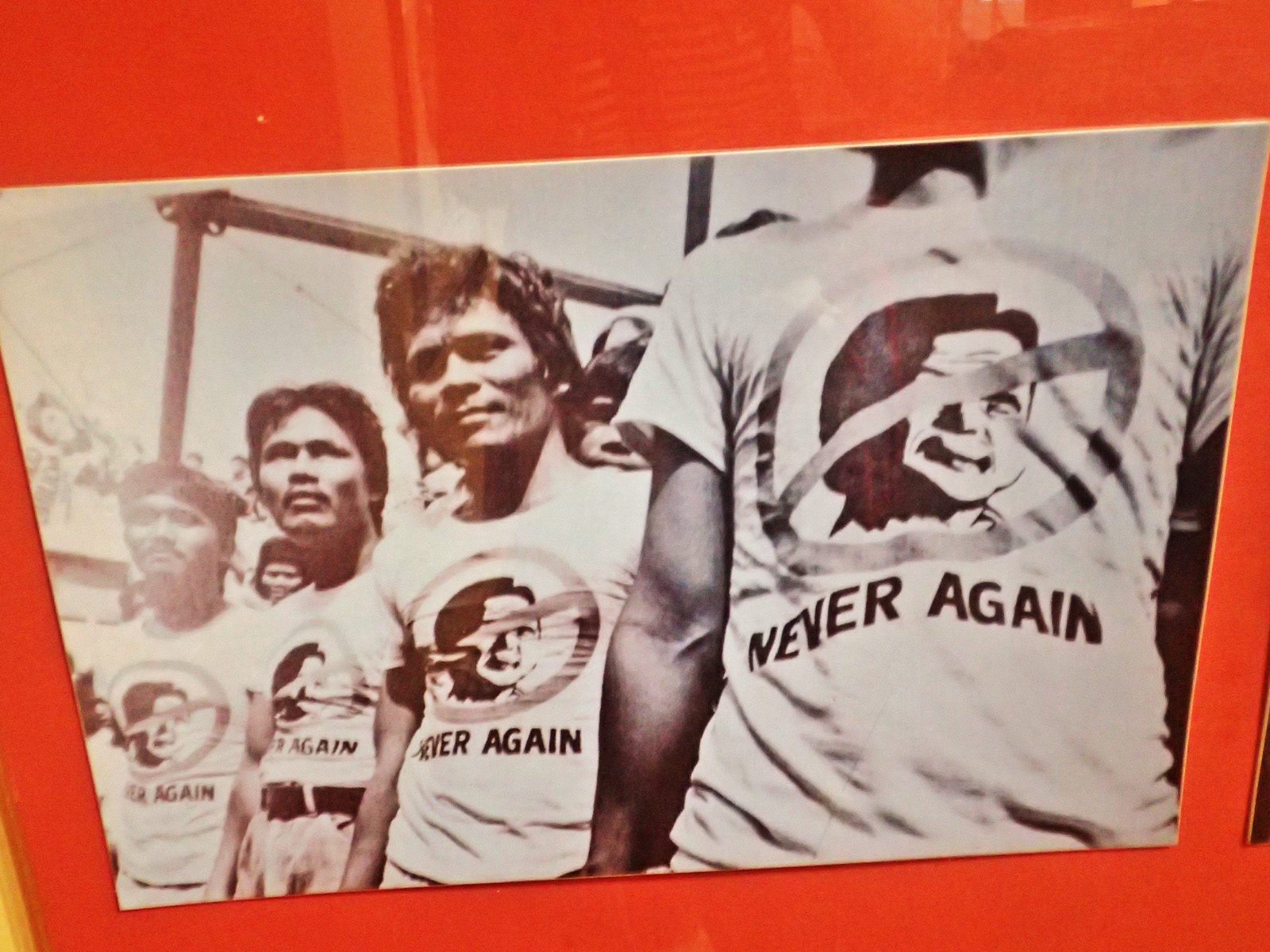
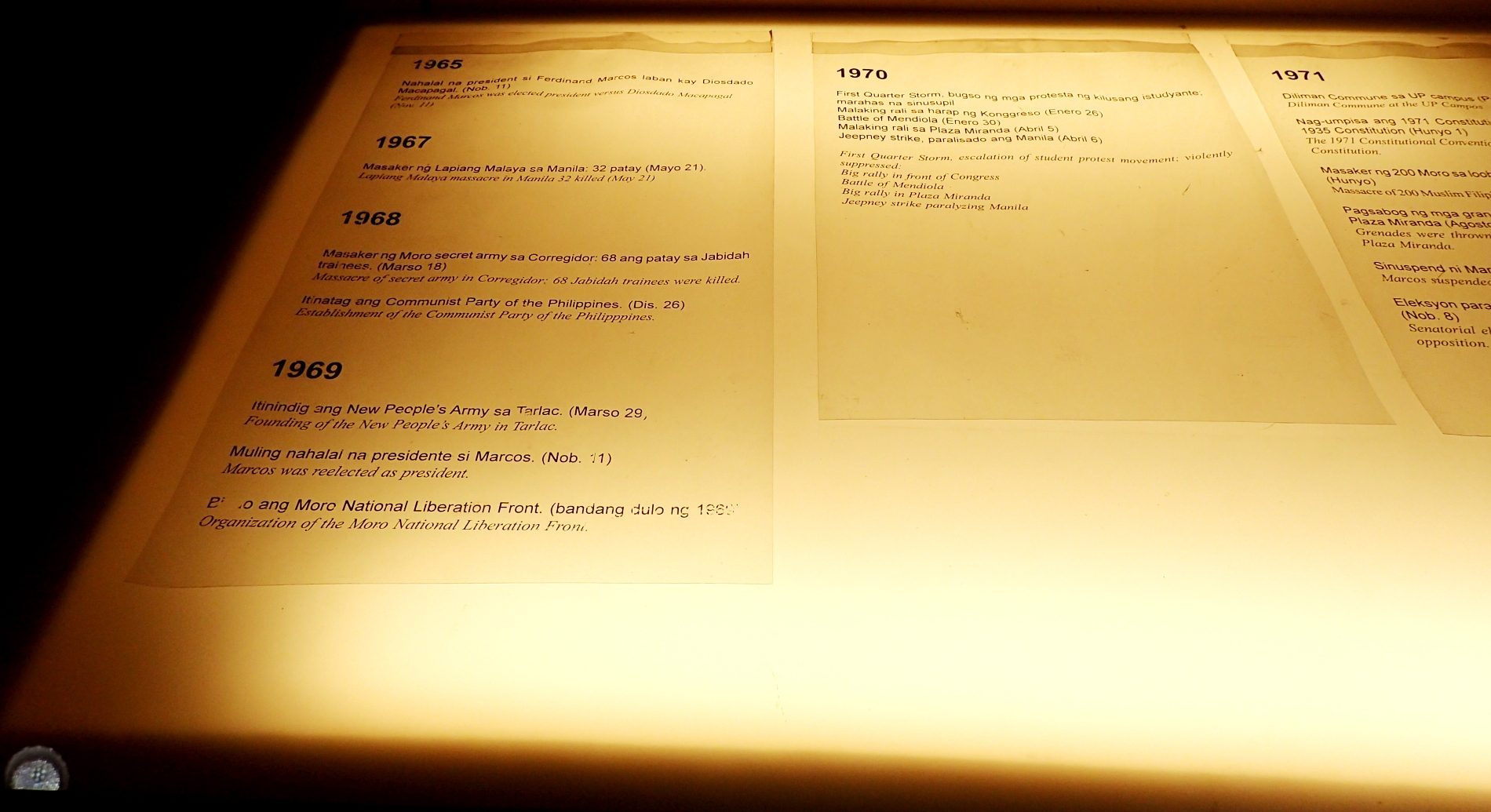
As you step outside Bantayog’s main building, you will again be greeted by the sight and shade of bodhi trees. Perhaps their presence is not coincidental; the bodhi tree is regarded sacred in another religious tradition – Buddhism – as it was under such a tree that the Buddha was said to have been enlightened.
Indeed, the Bantayog ng mga Bayani can be said to be a place for enlightenment on Martial Law matters, and those who come might learn a thing or more about that period in the country’s history.
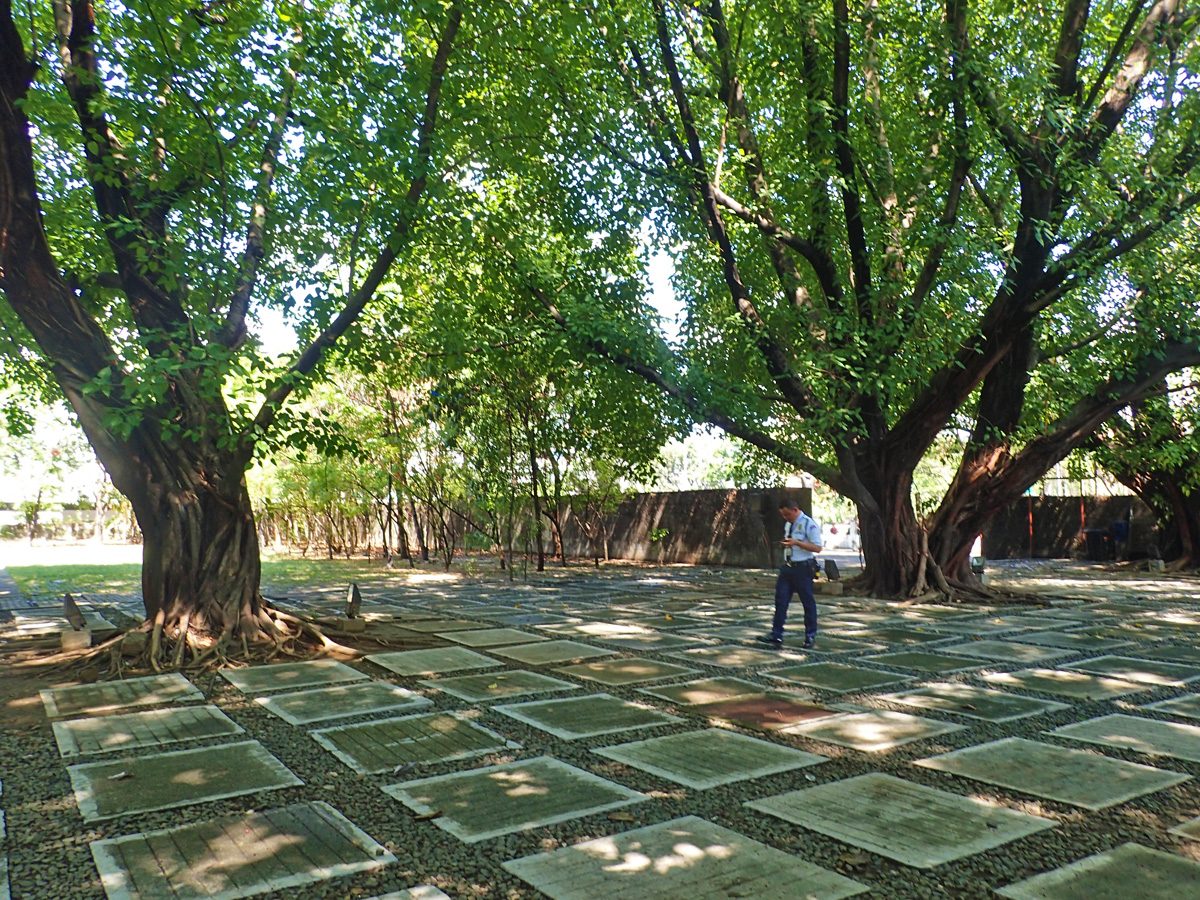
Come and see for yourself.
– Rappler.com
Bantayog ng mga Bayani is open Mondays to Fridays, 8 am to 5 pm. Museum is open Mondays and Thursdays, with last guided tour at 3 pm.Weekends are available by appointment. Museum entrance is P50, including guided tour. You can also just enter the grounds and see the Wall of Remembrance during the weekend, but with prior advice to Bantayog staff.
For inquiries, appointments, and group tours, e-mail bantayogbayani@gmail.com or call (632) 434-8343 or (632) 985-1126. You can find more information, including profiles of Martial Law heroes and martyrs, on their website.
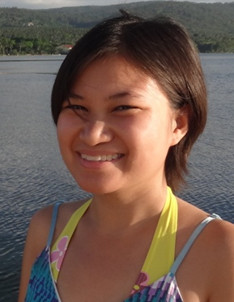
Add a comment
How does this make you feel?
There are no comments yet. Add your comment to start the conversation.